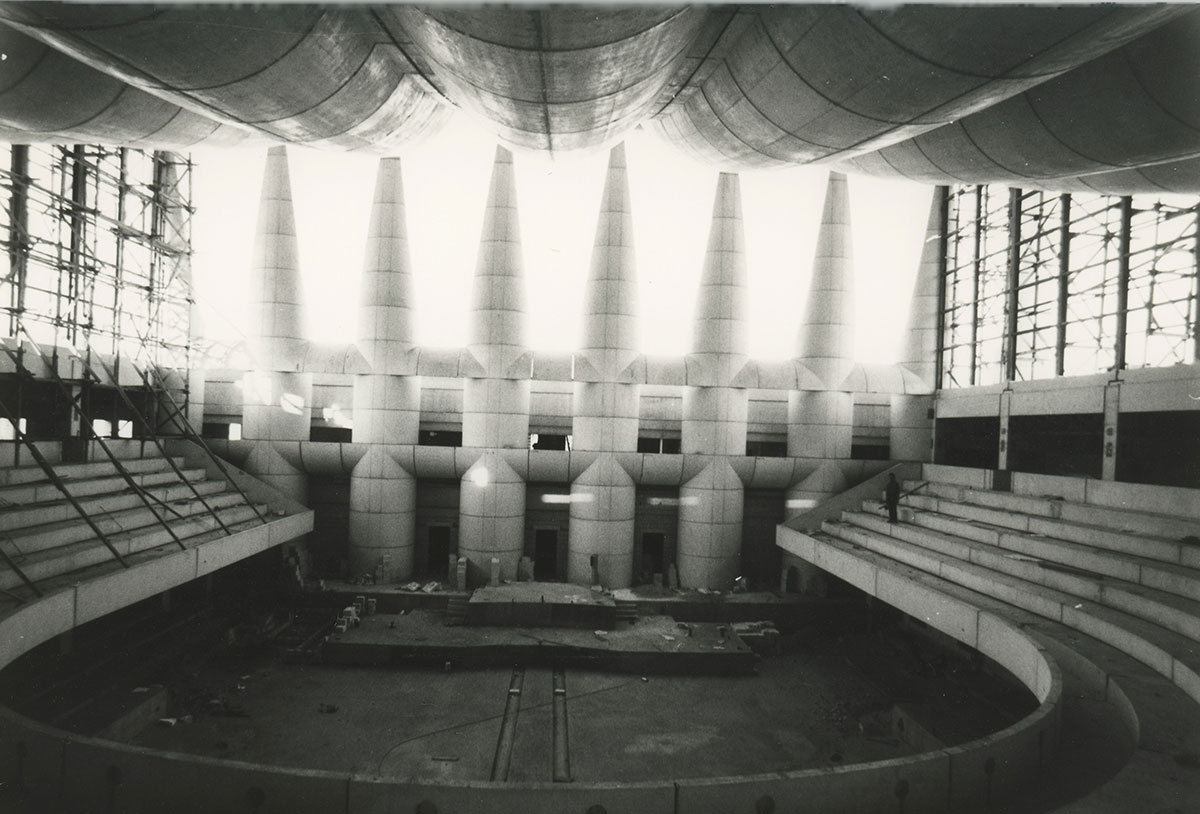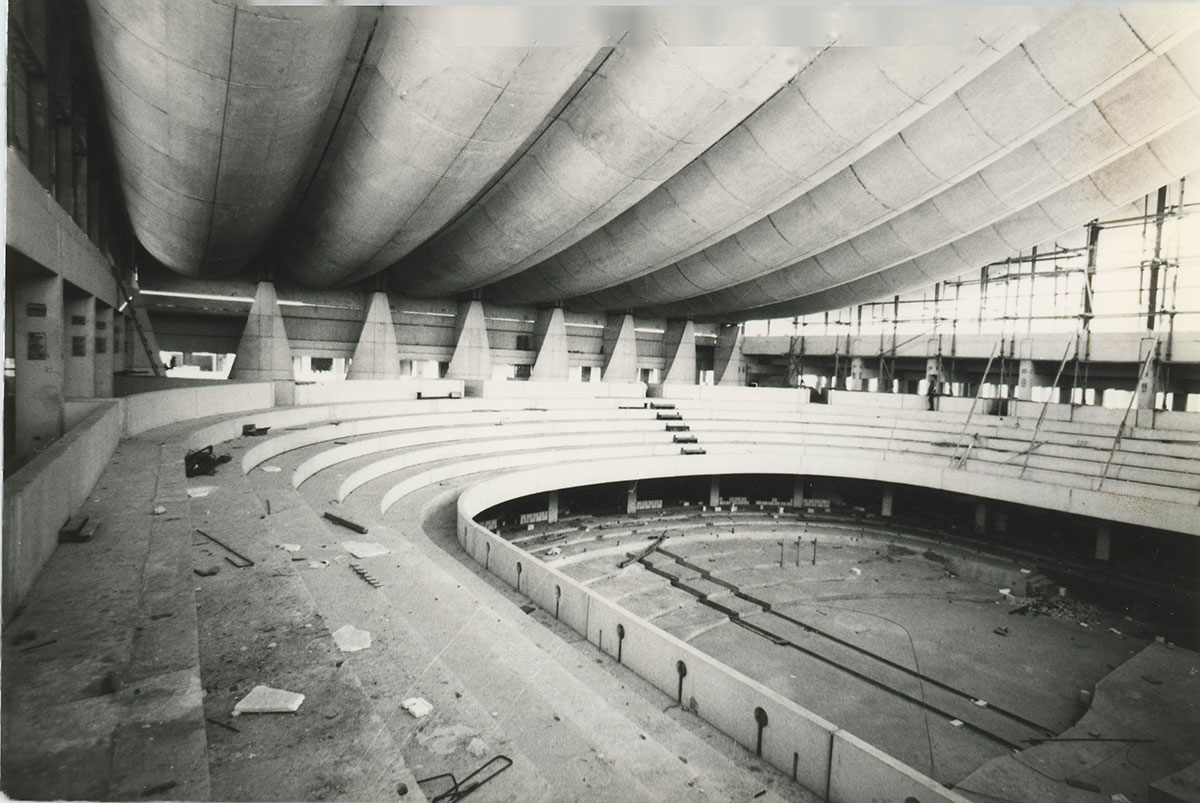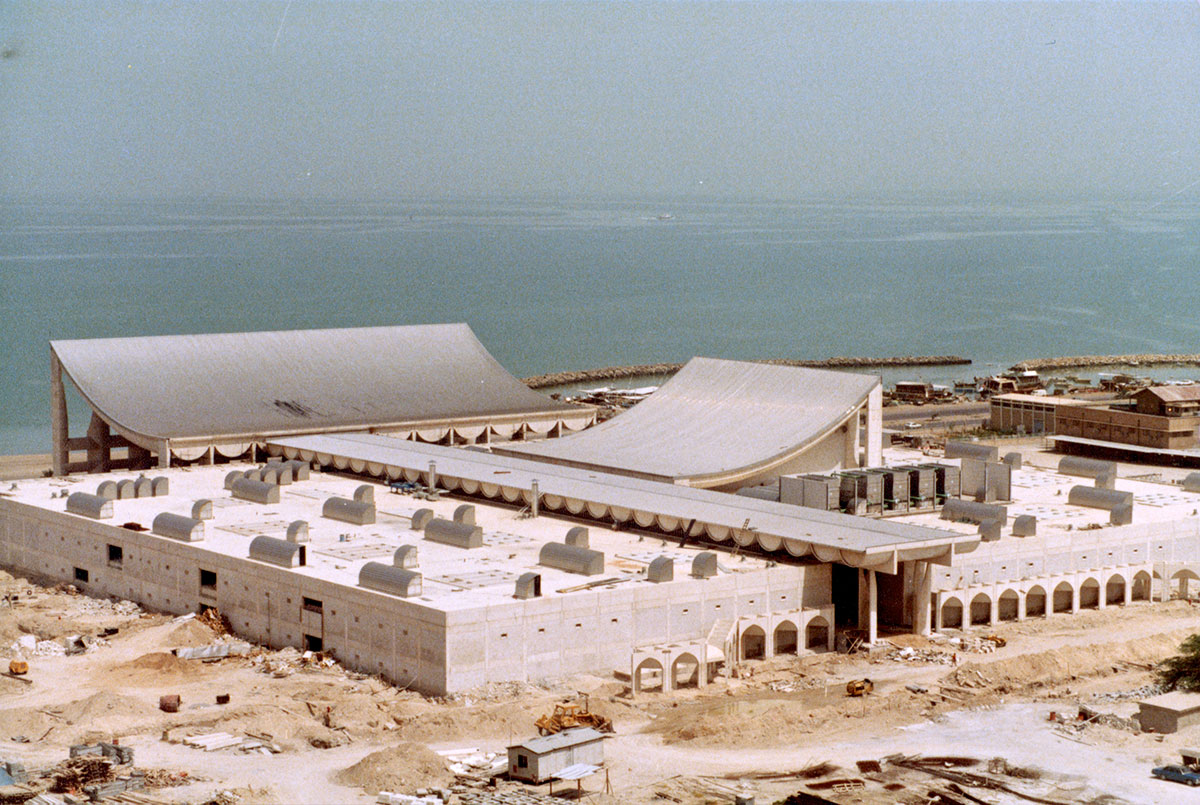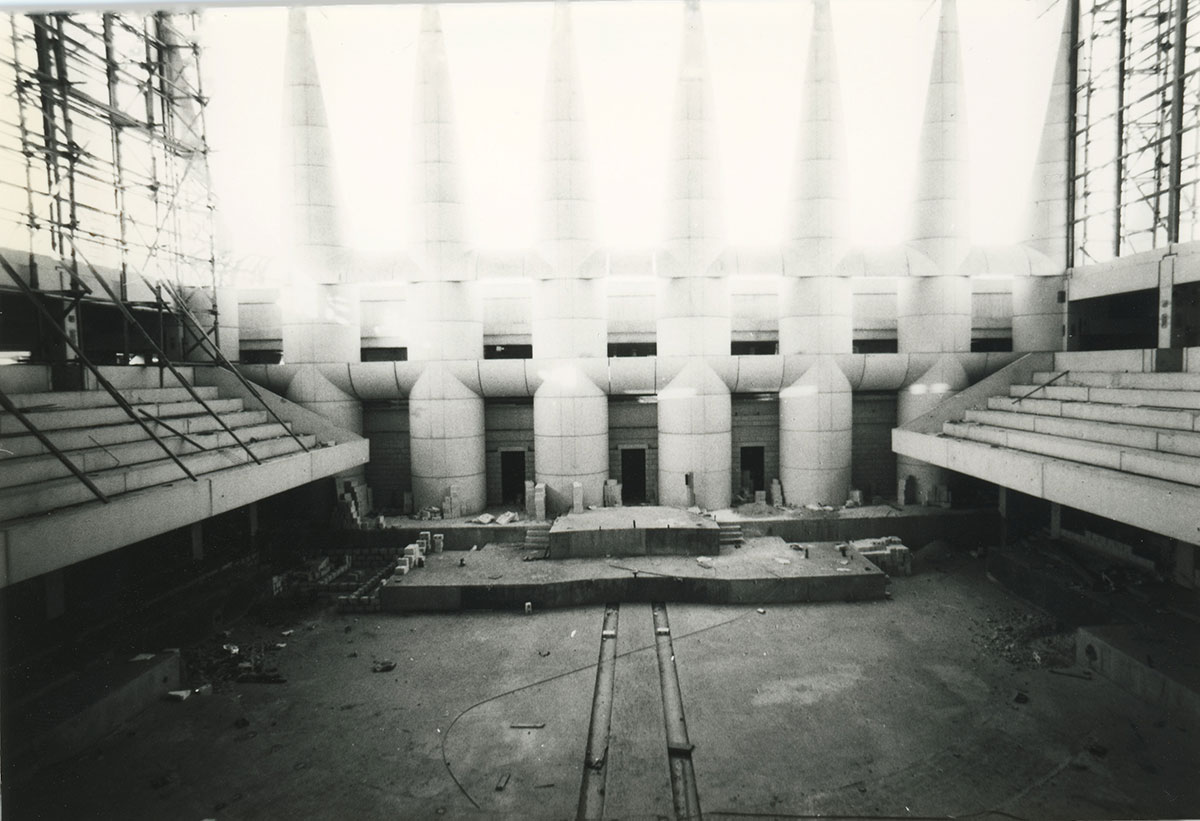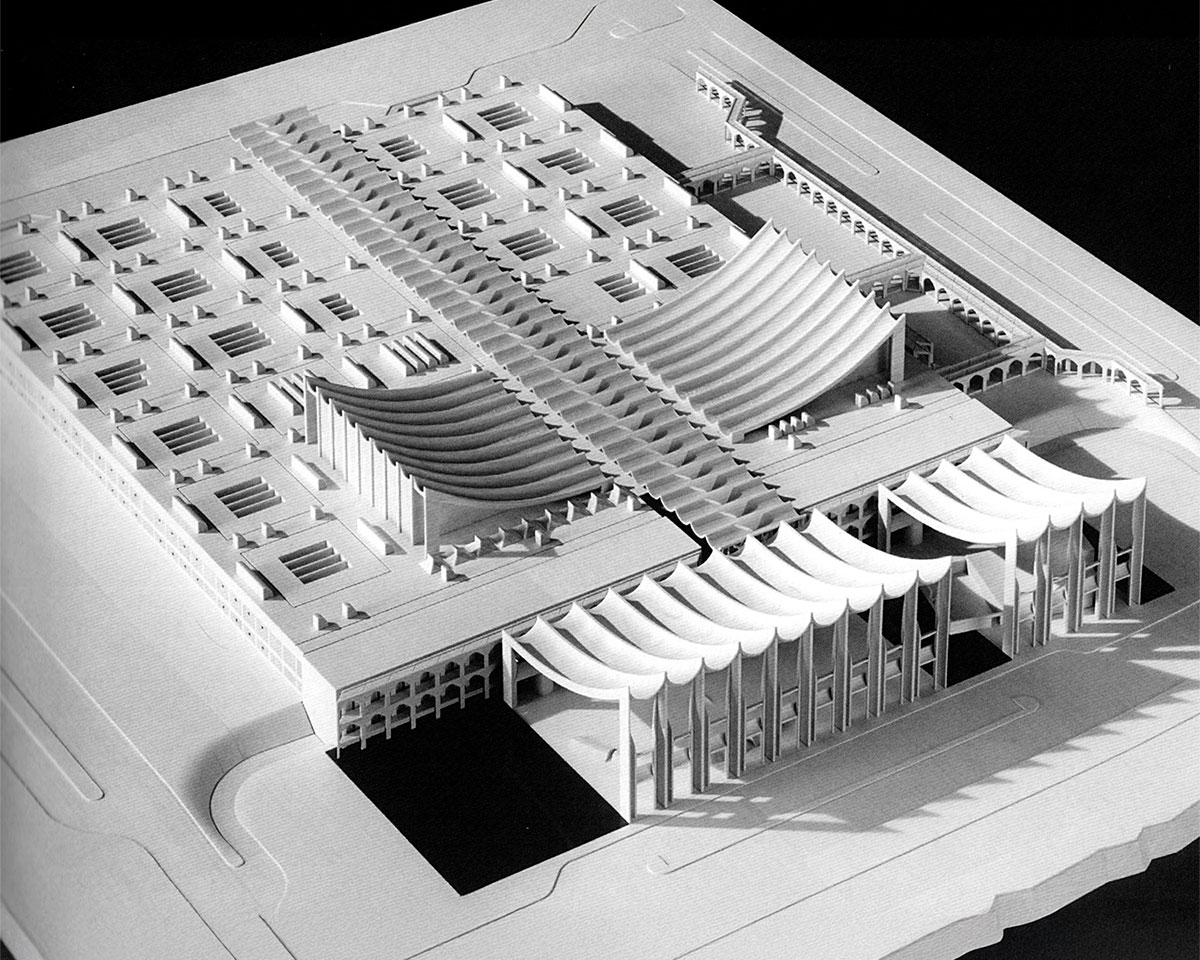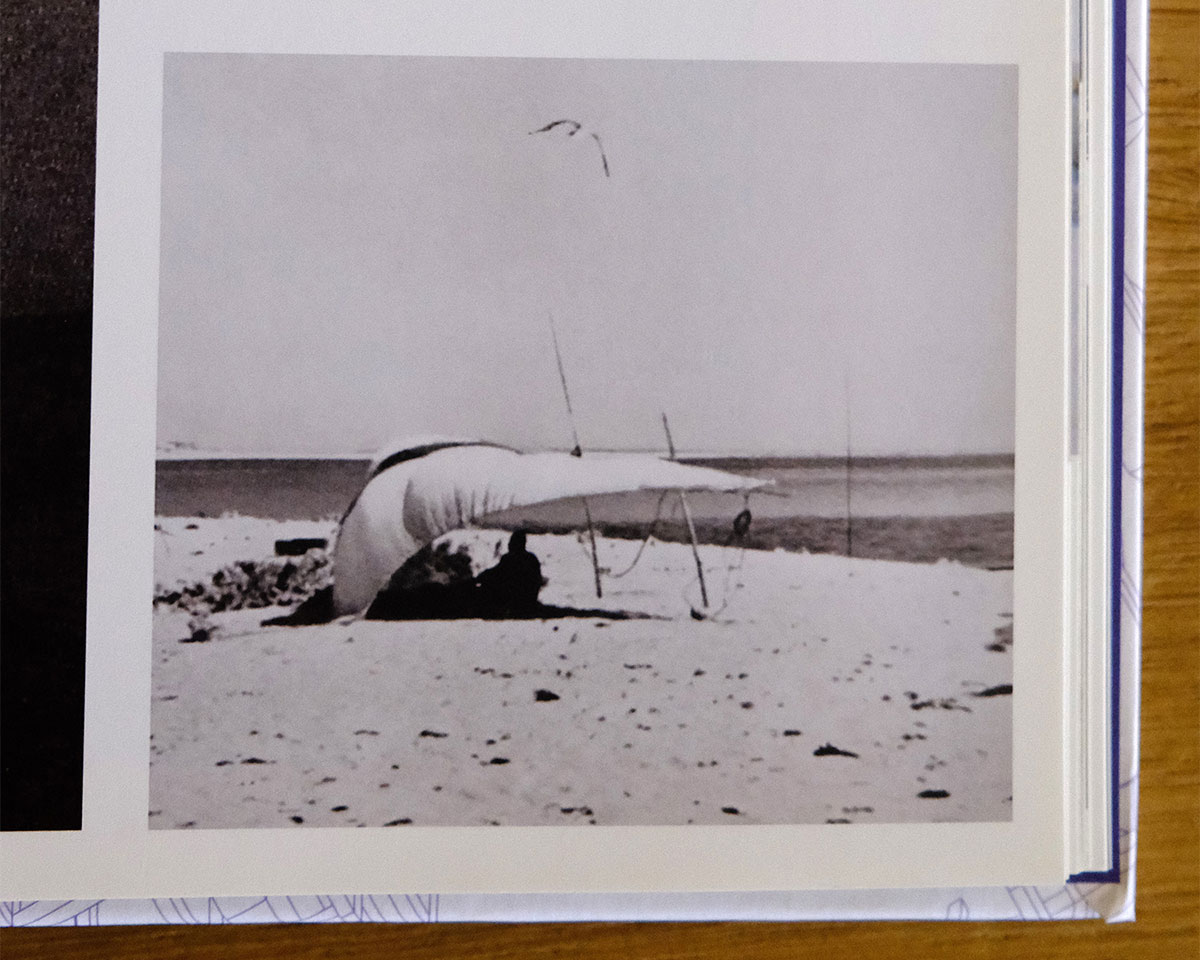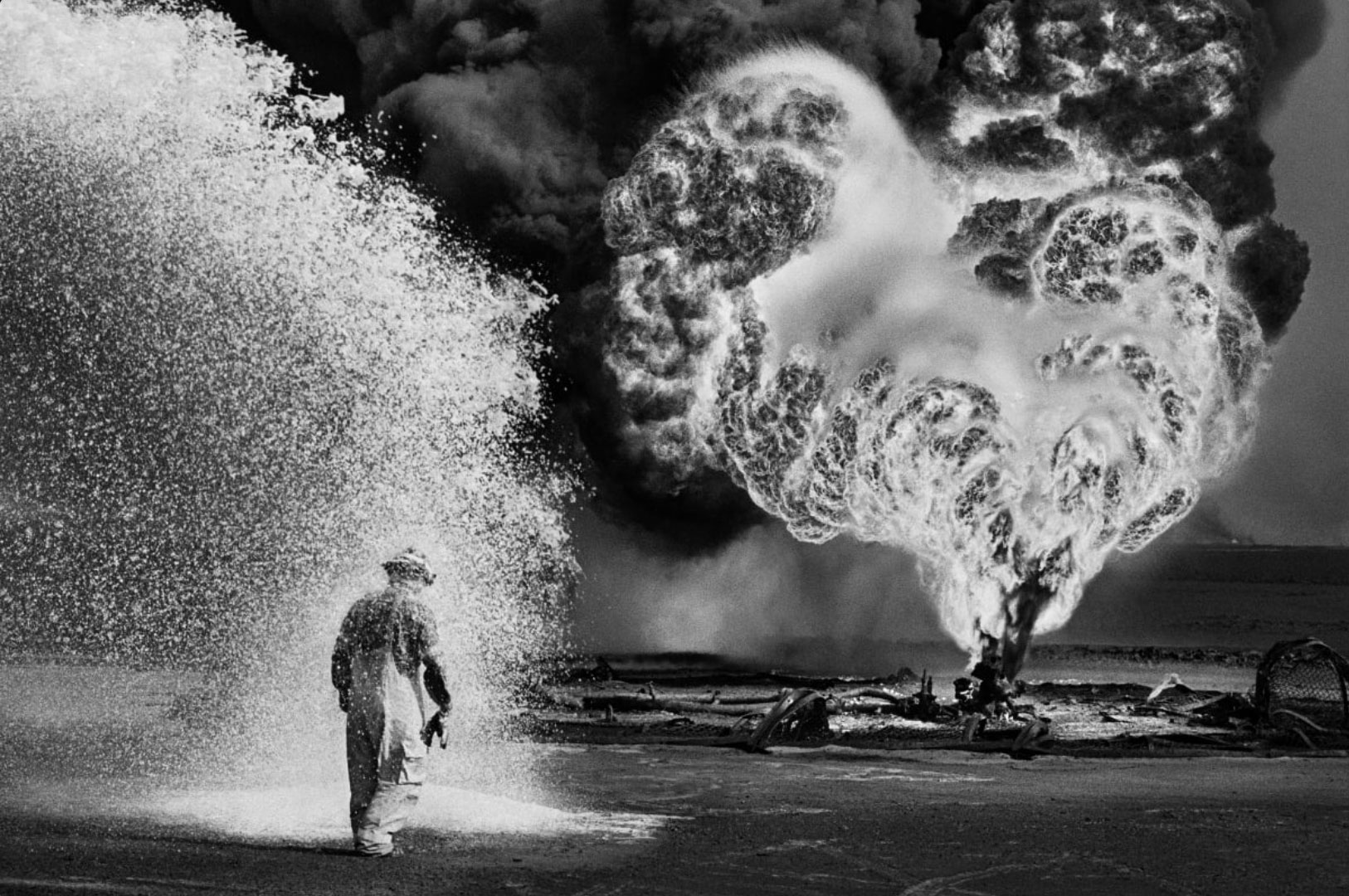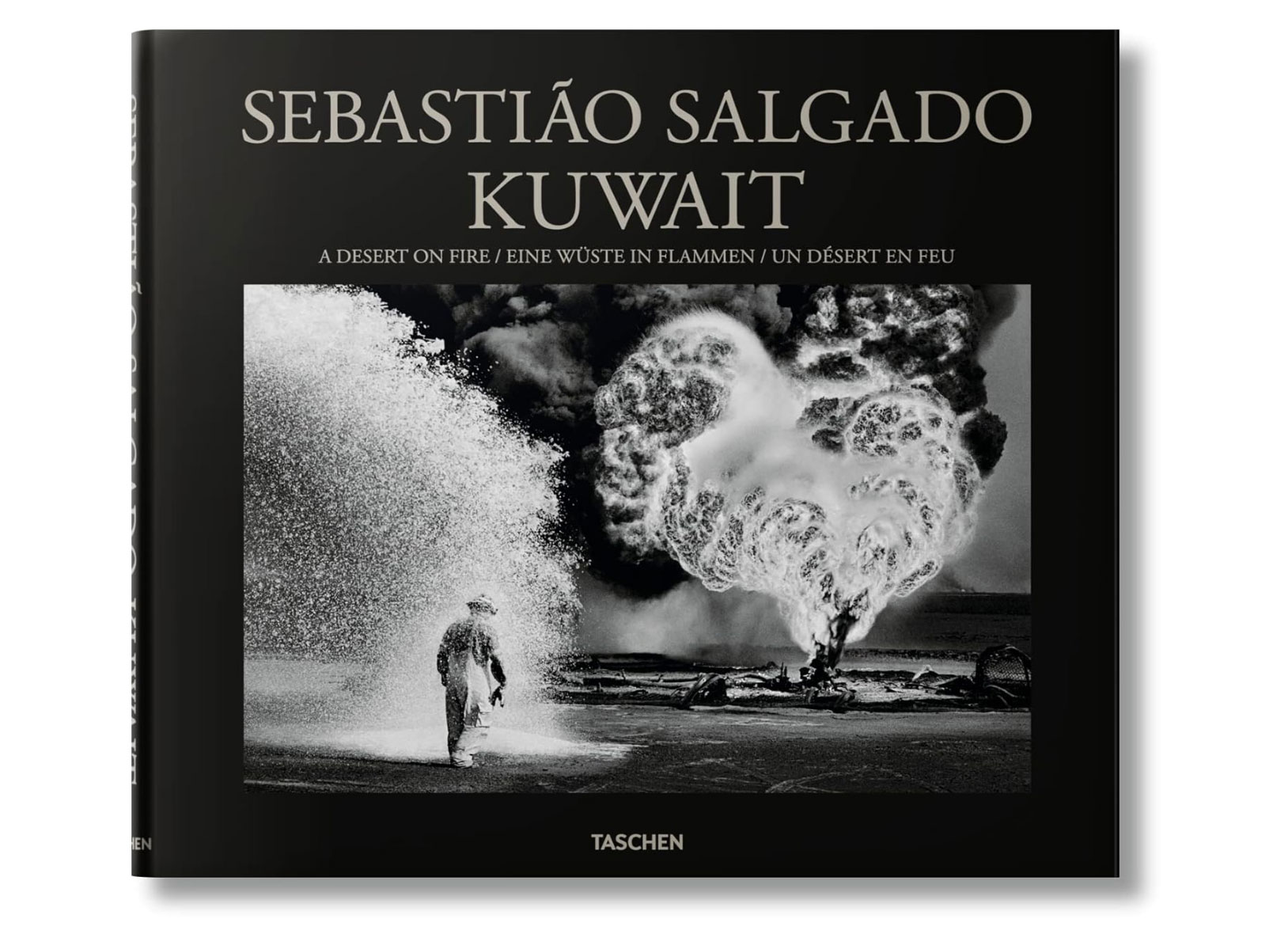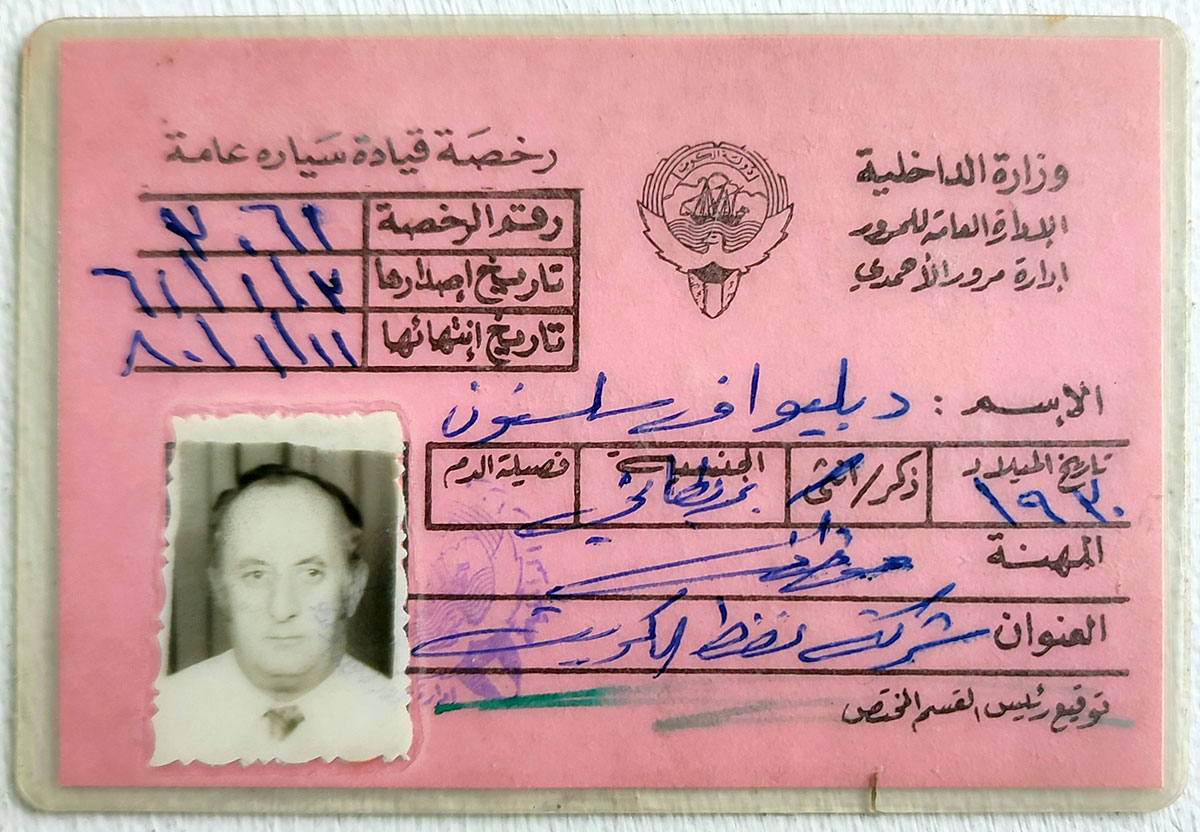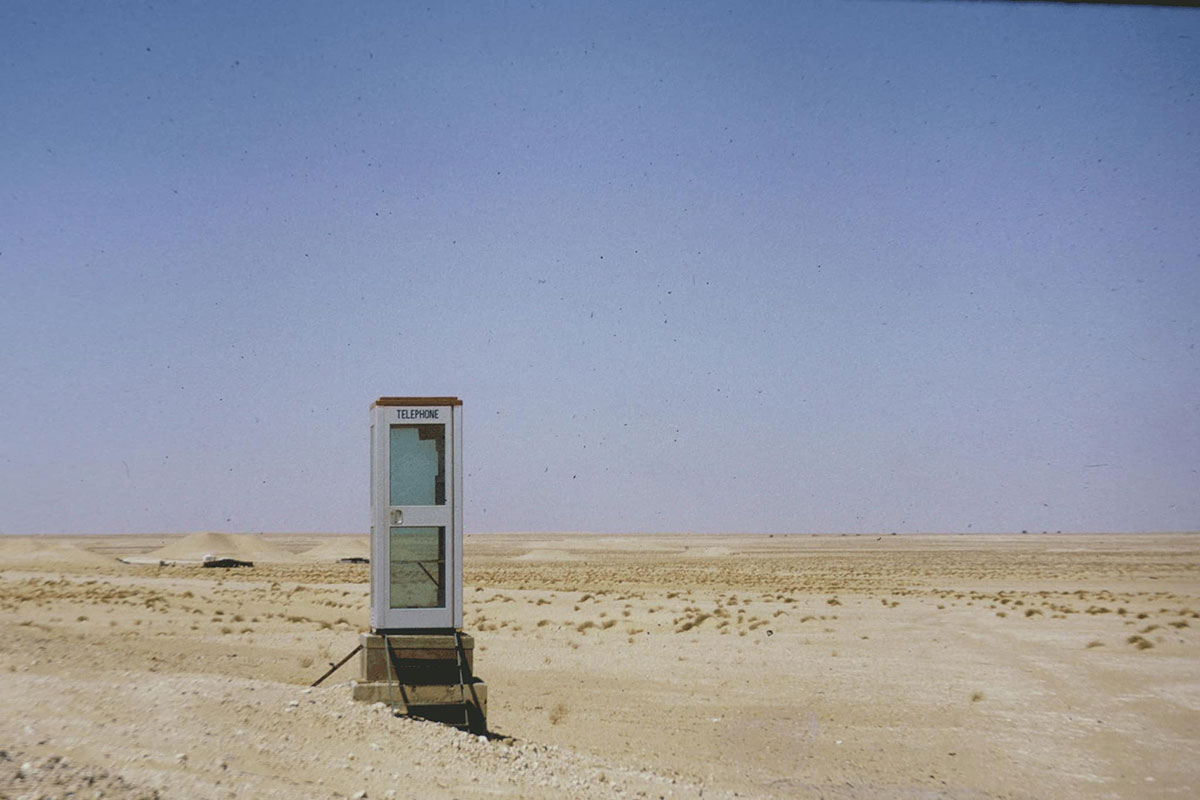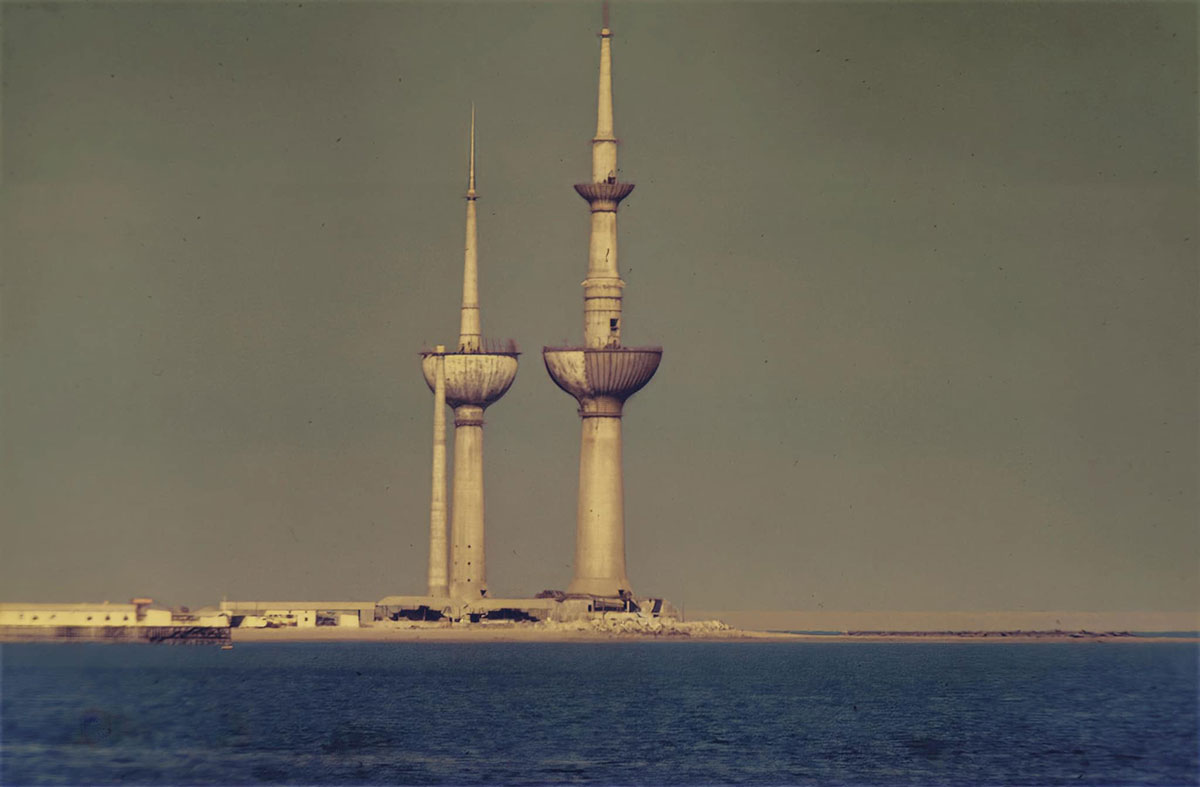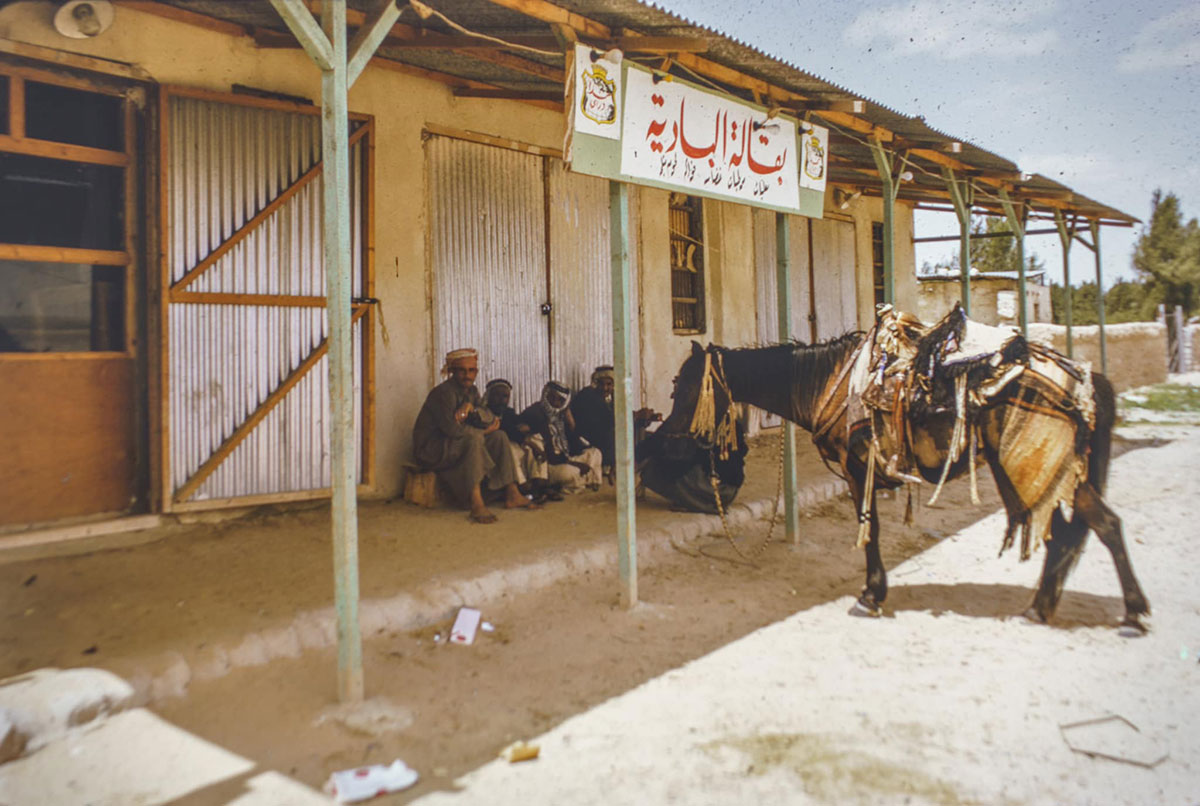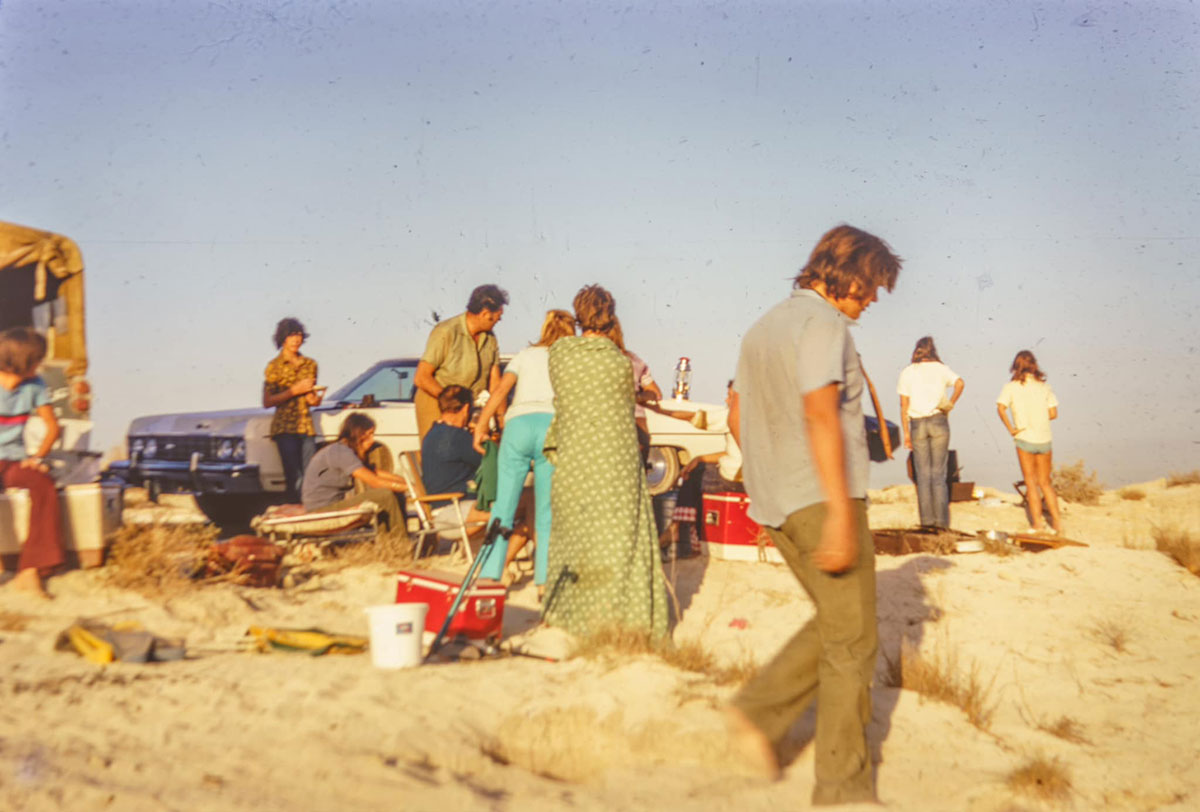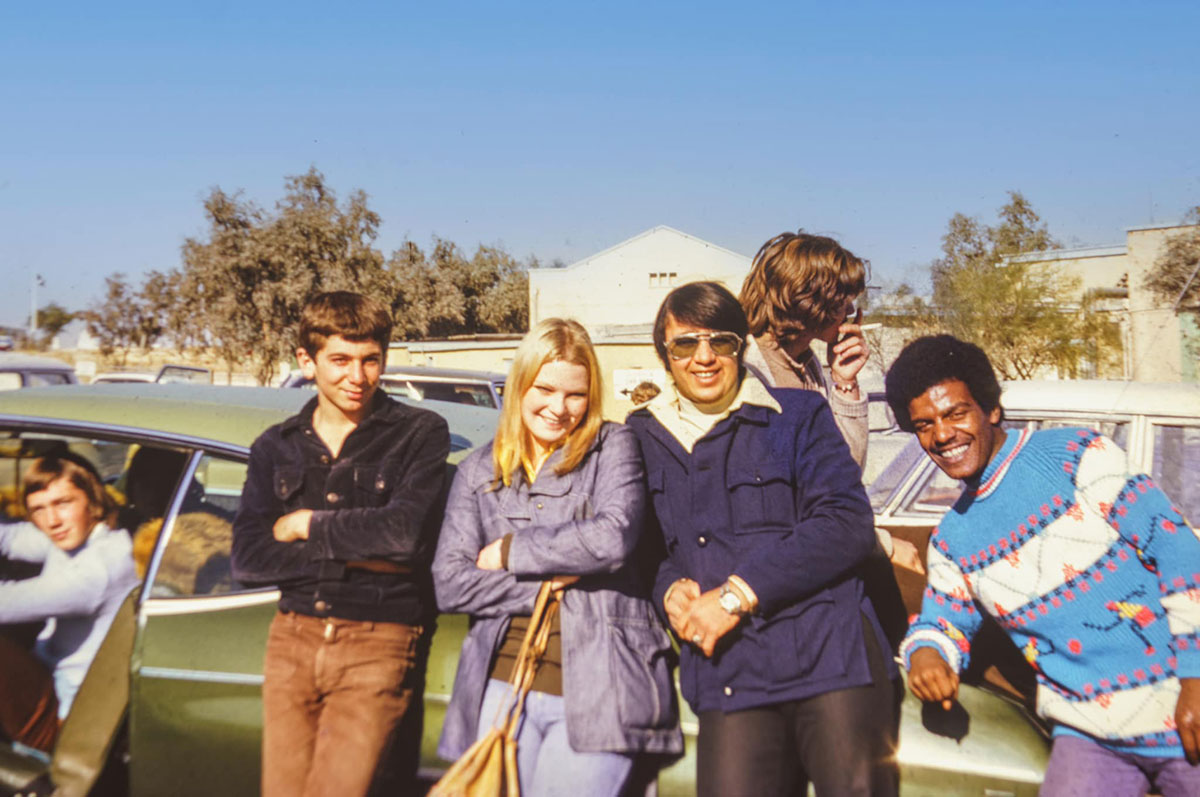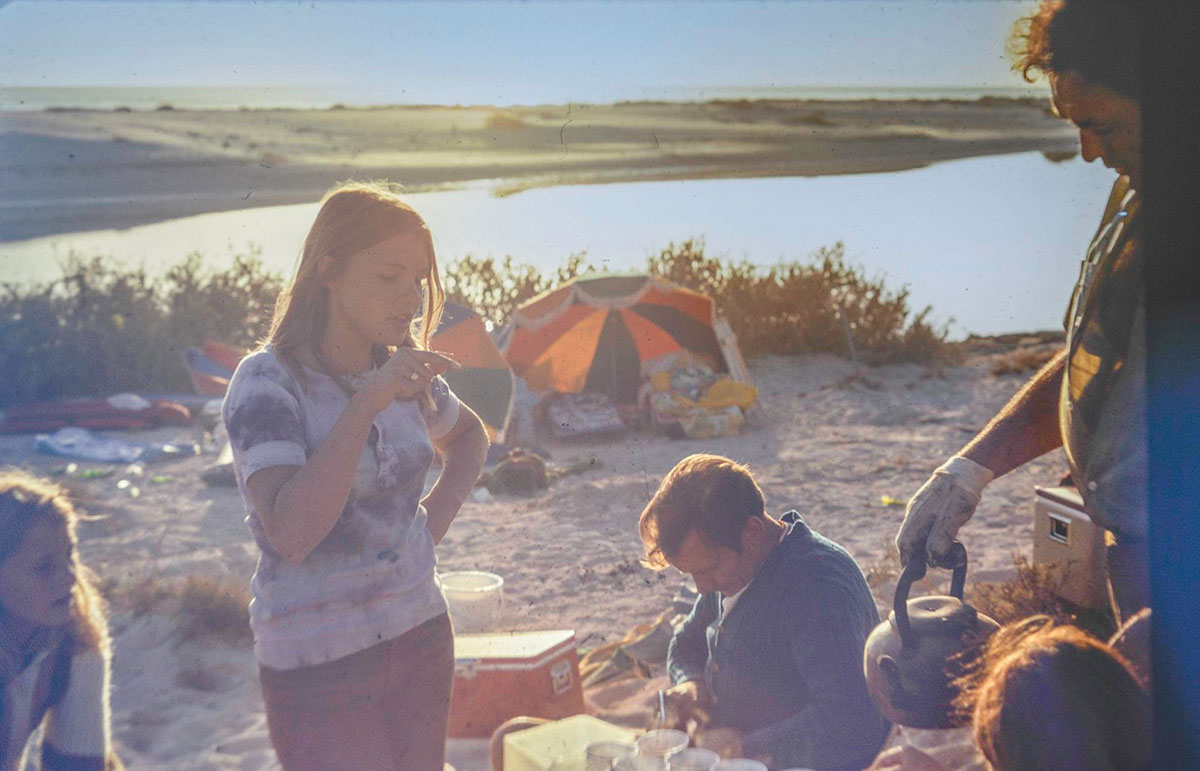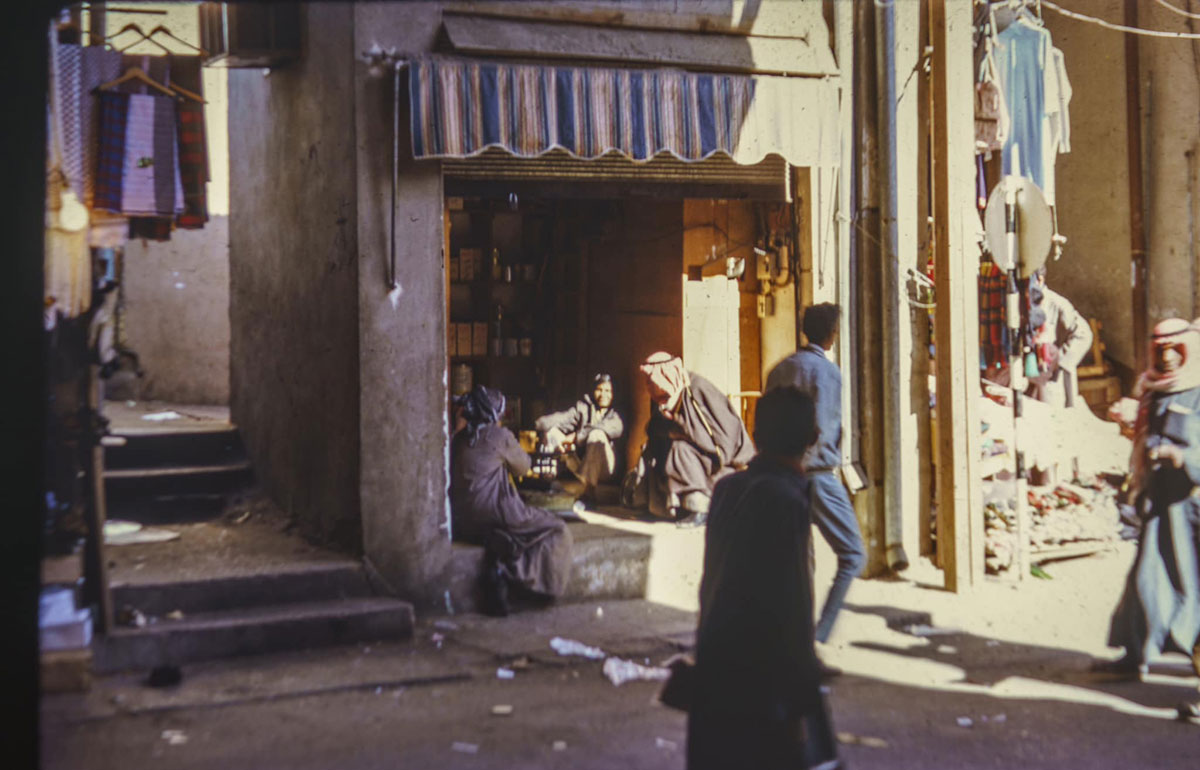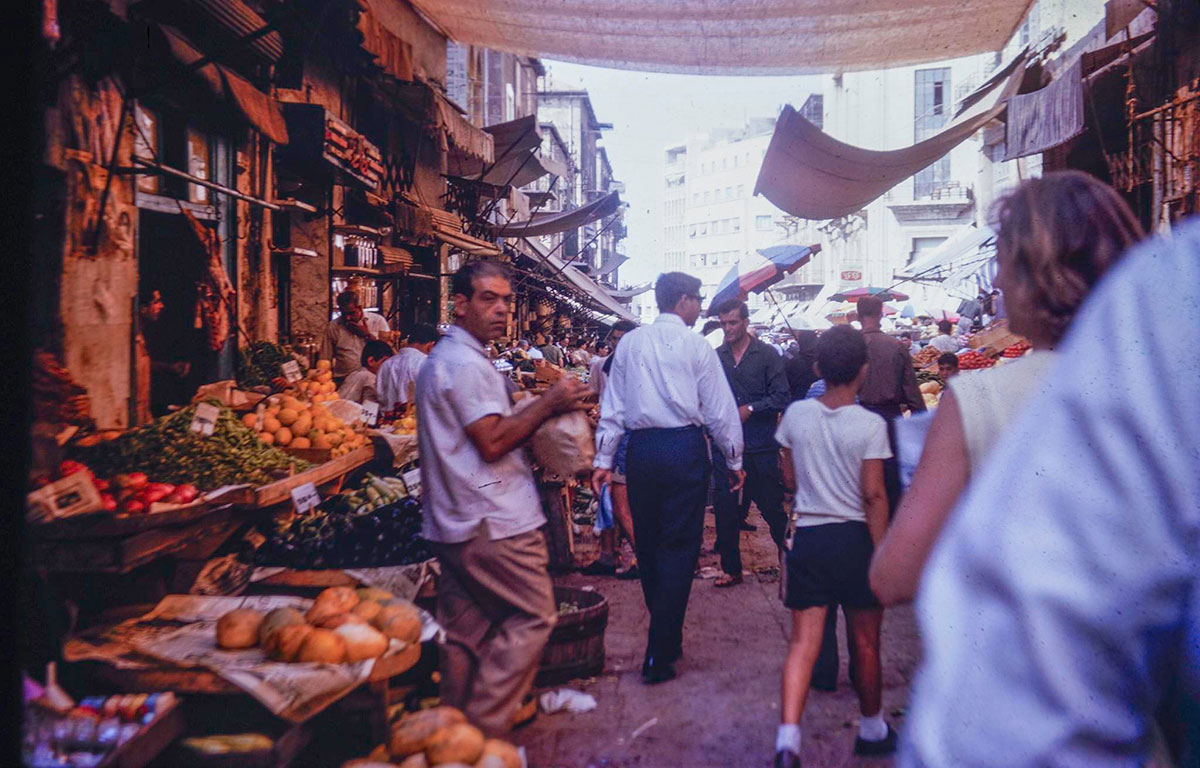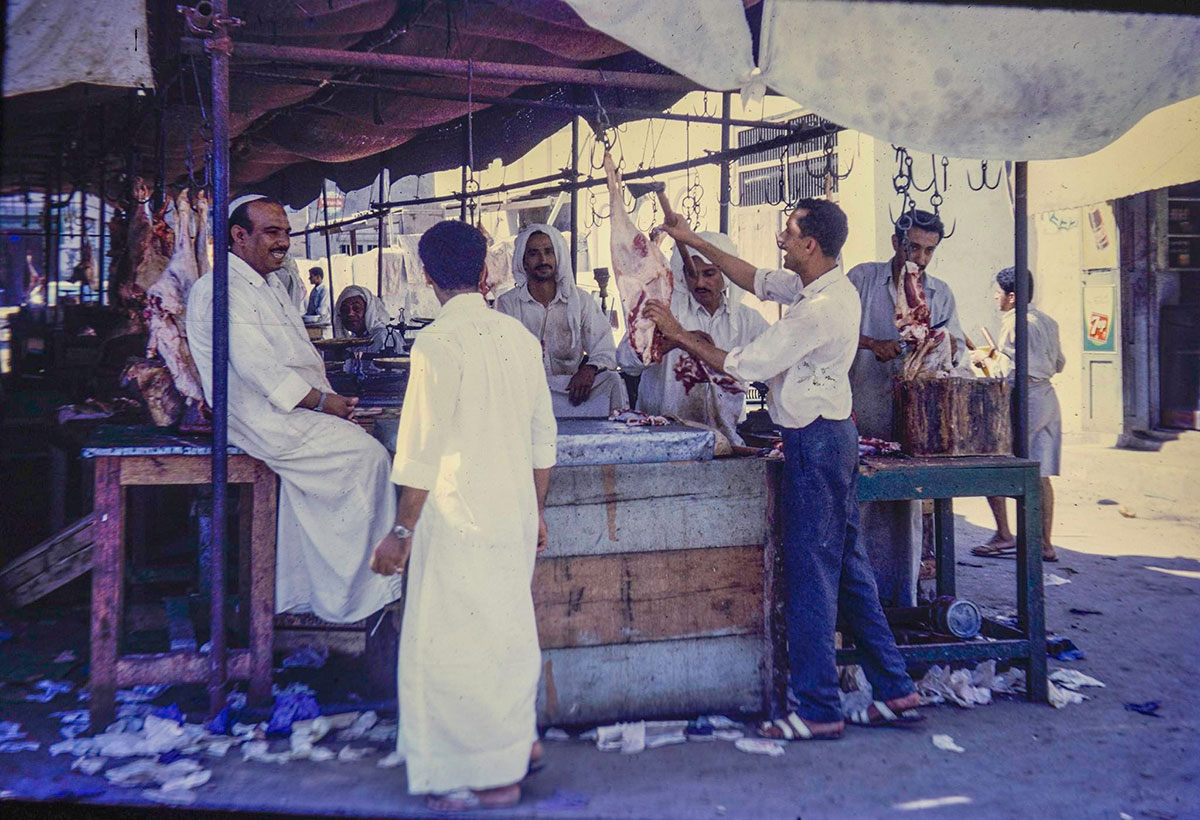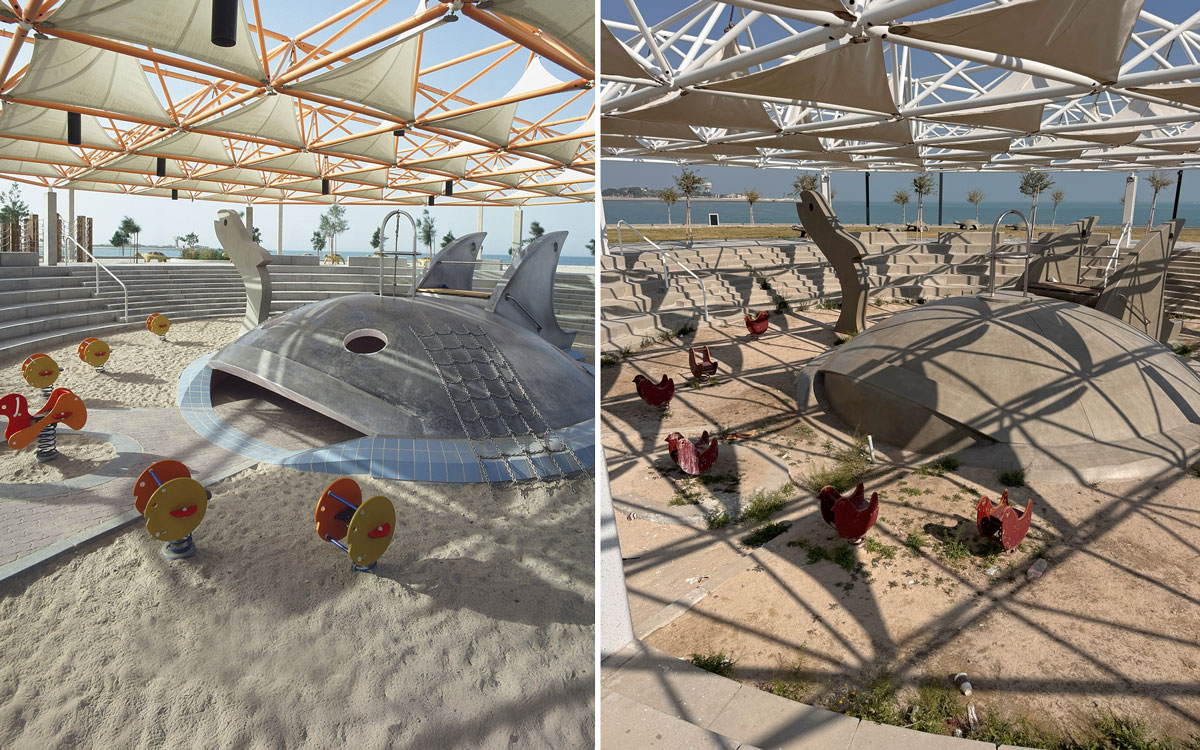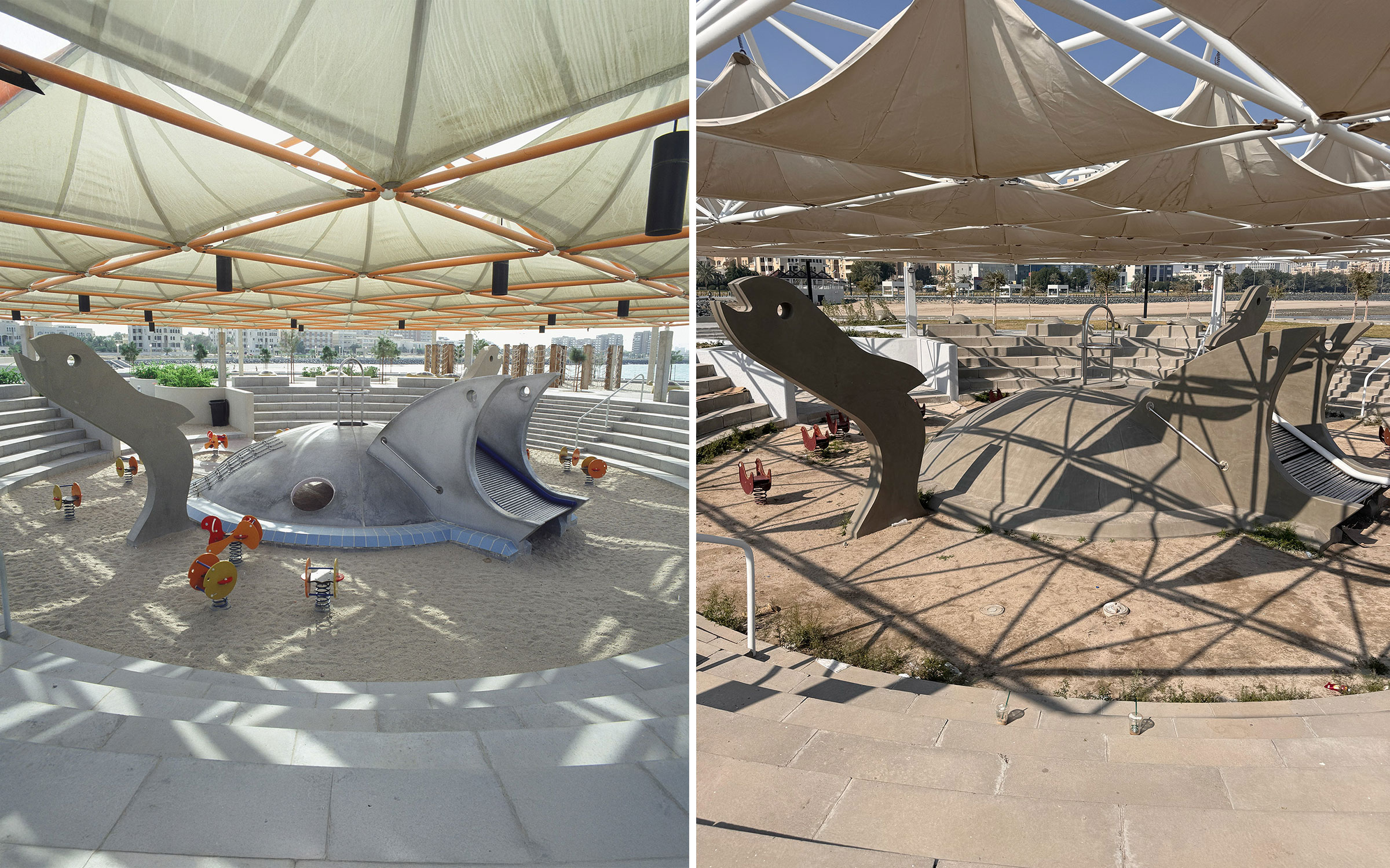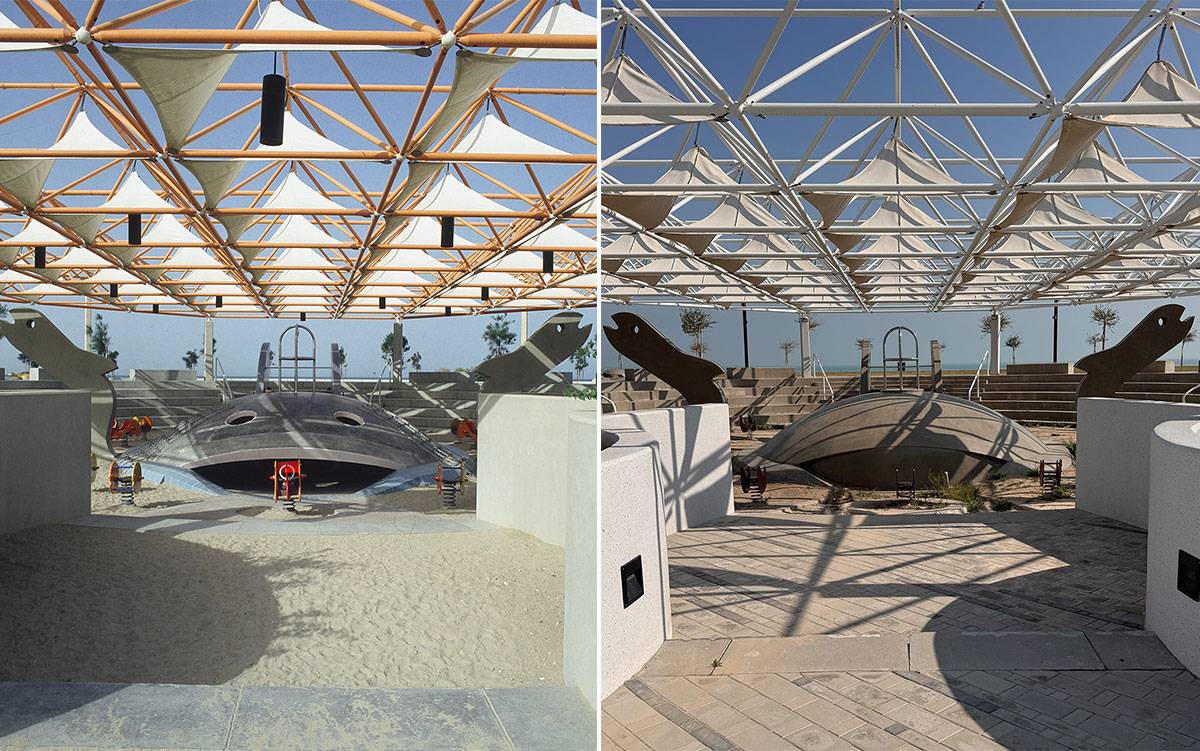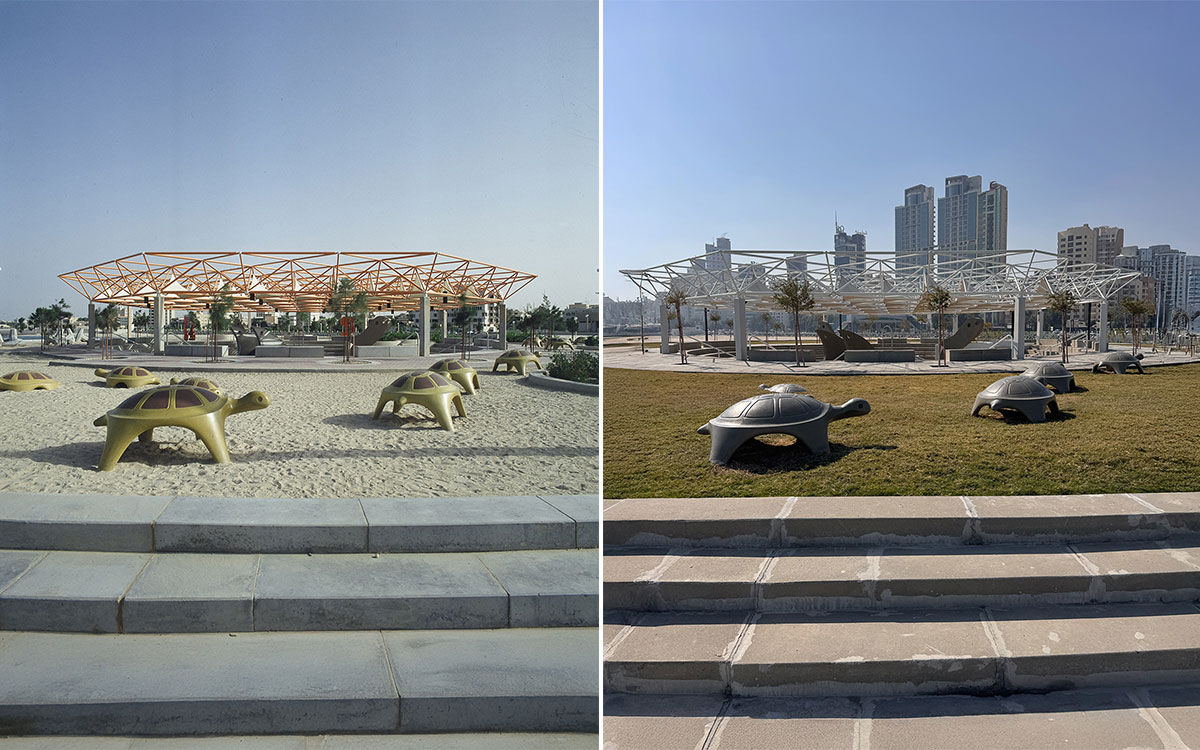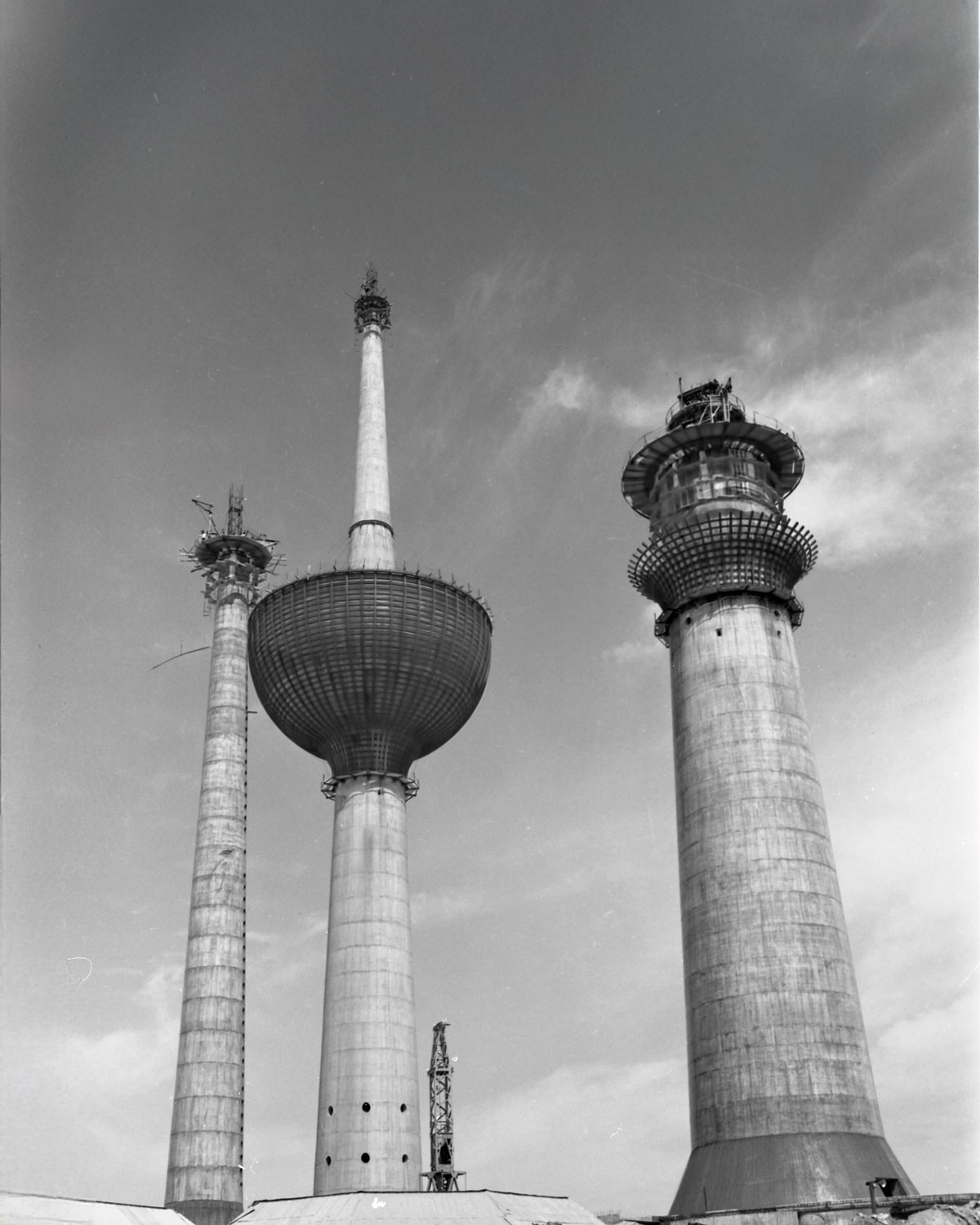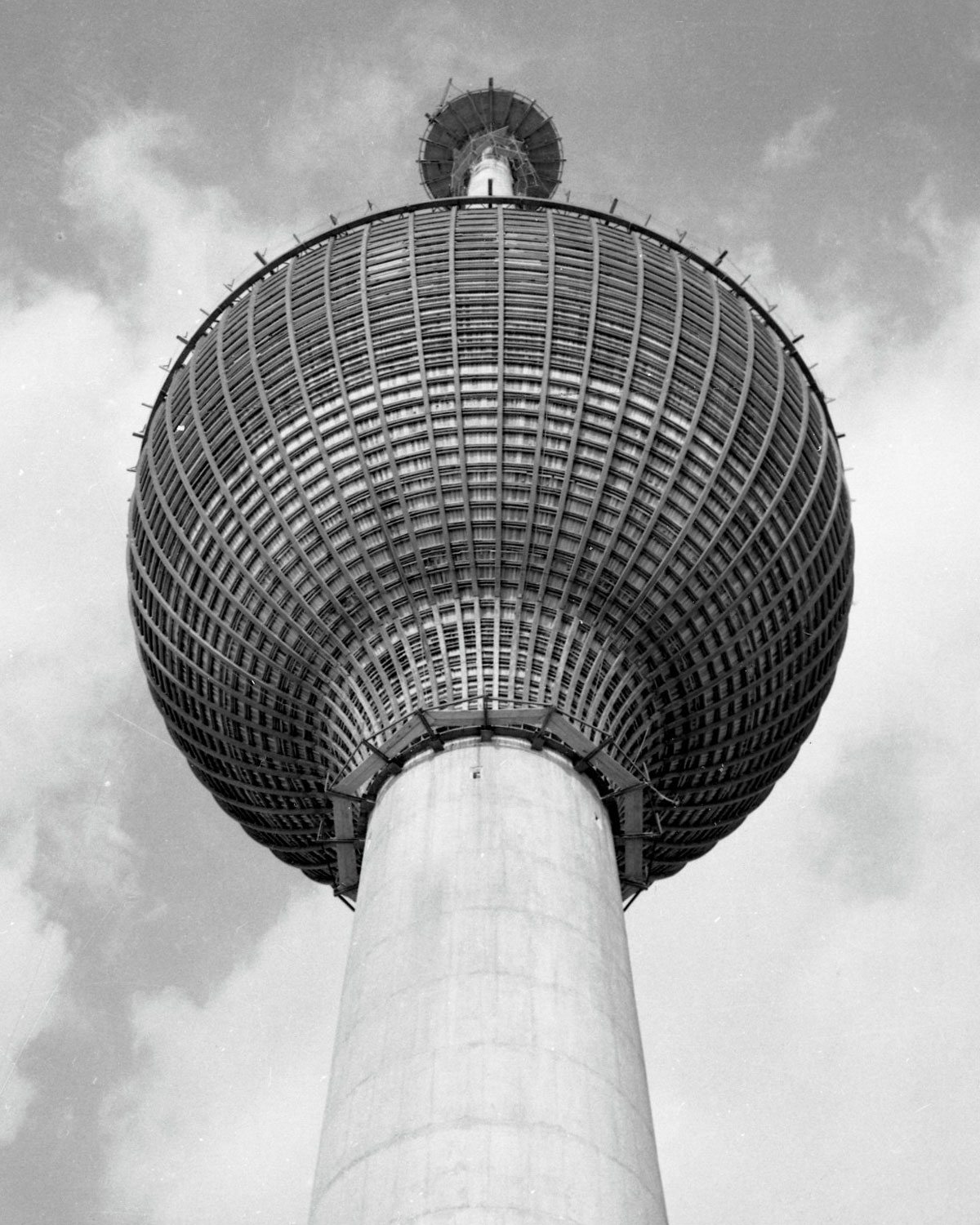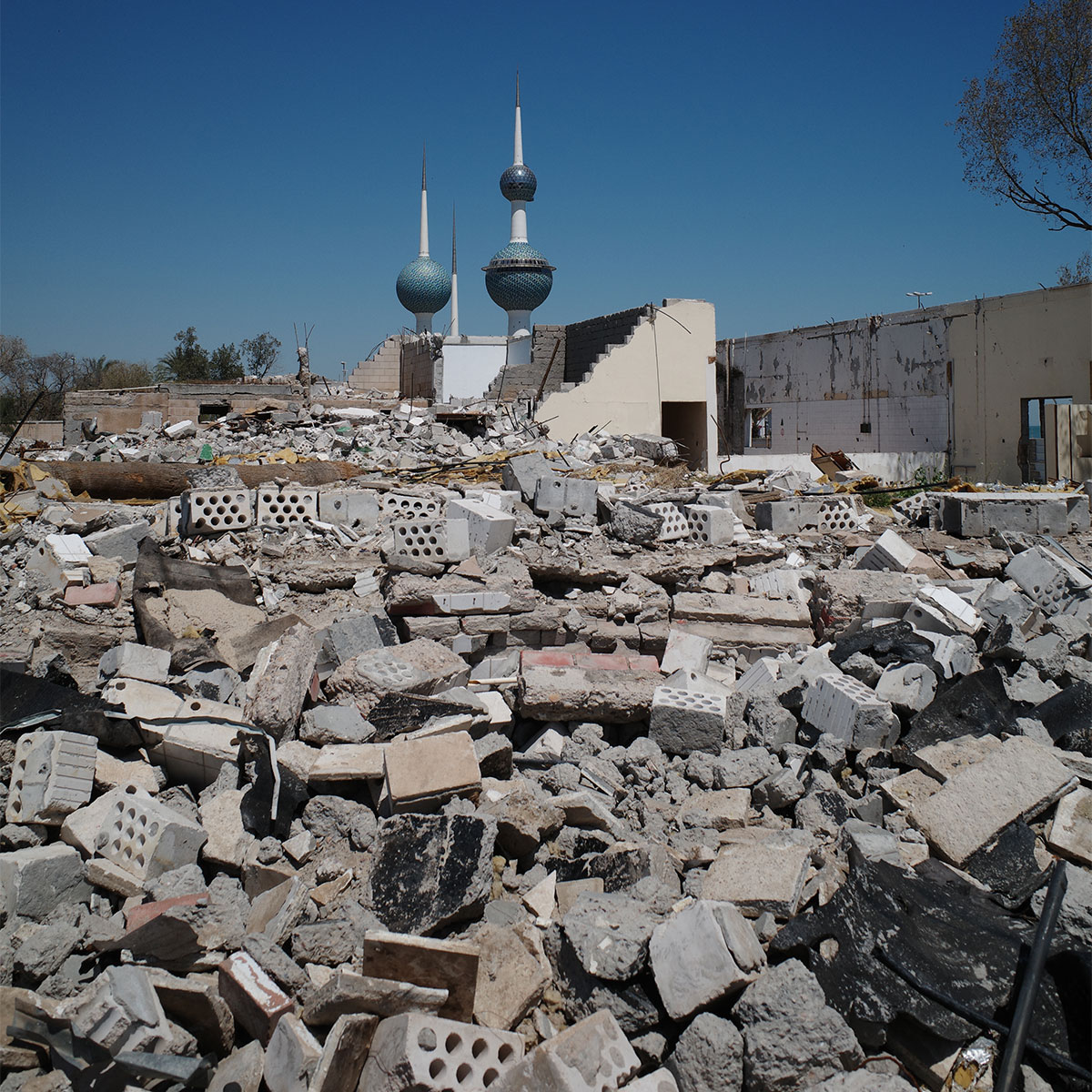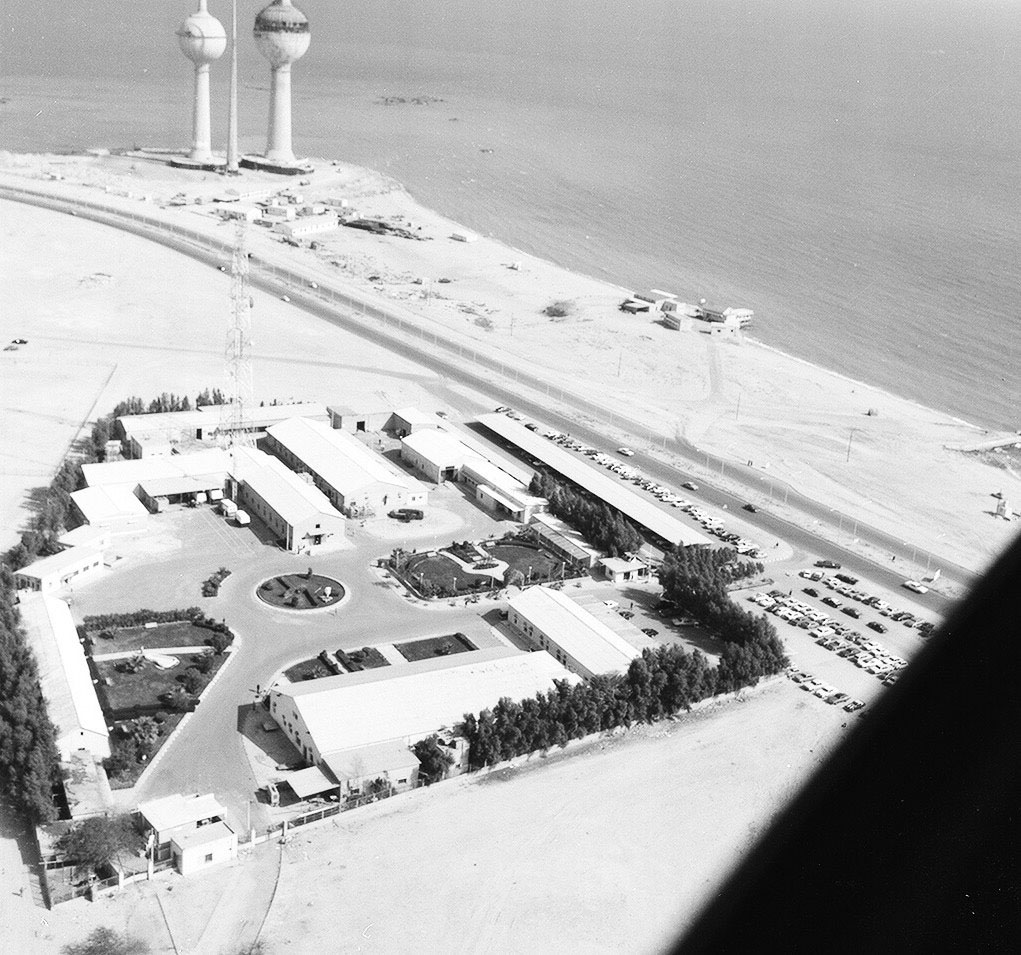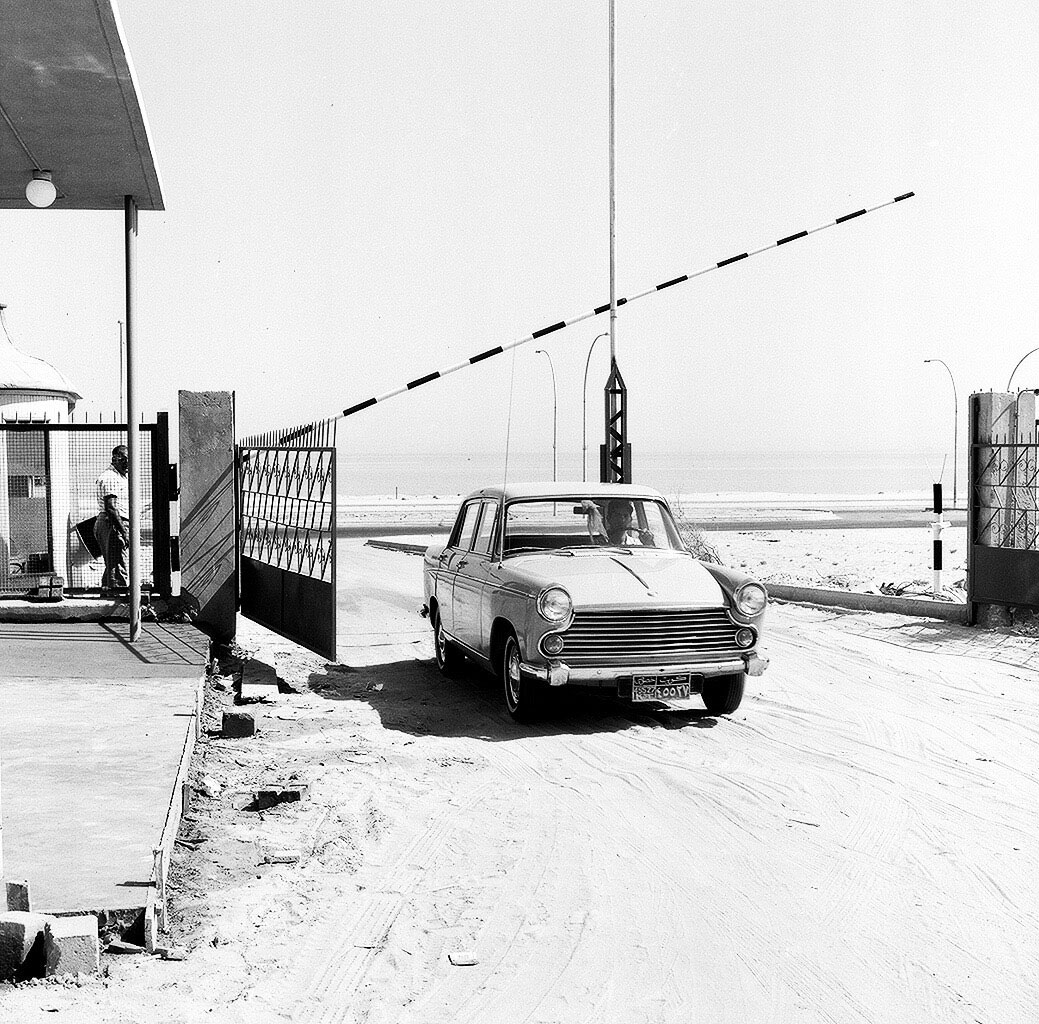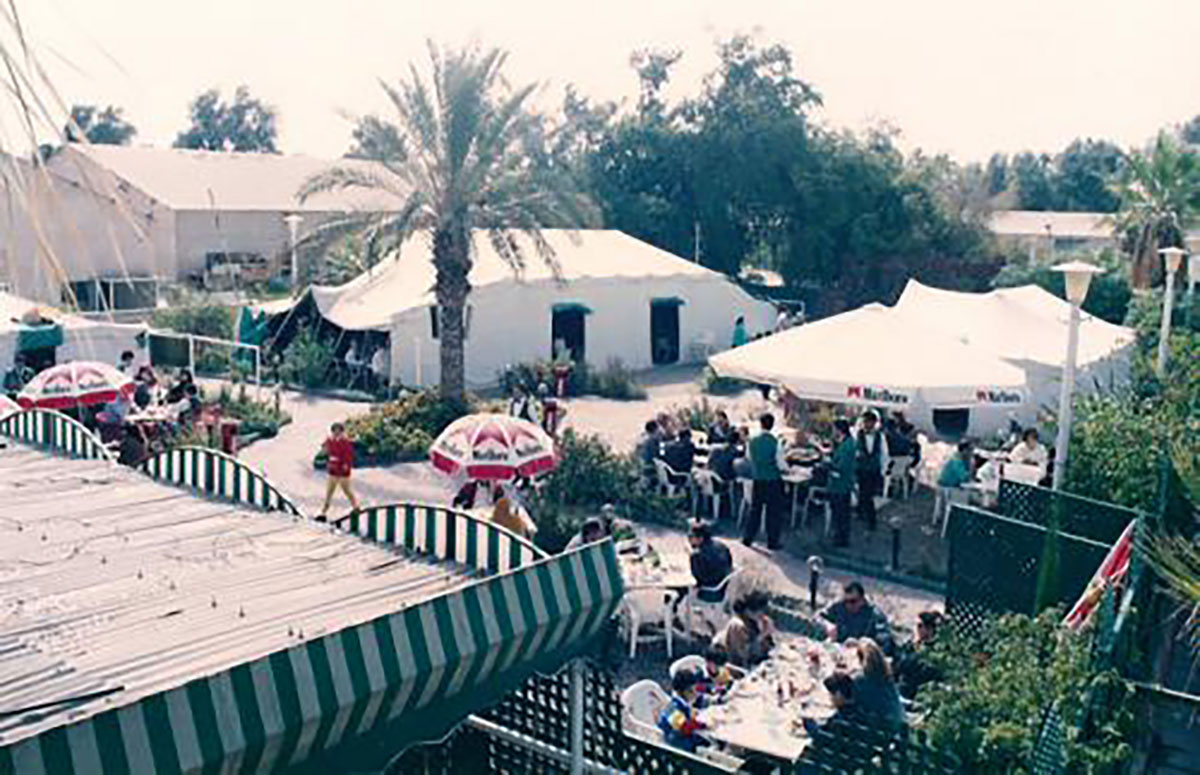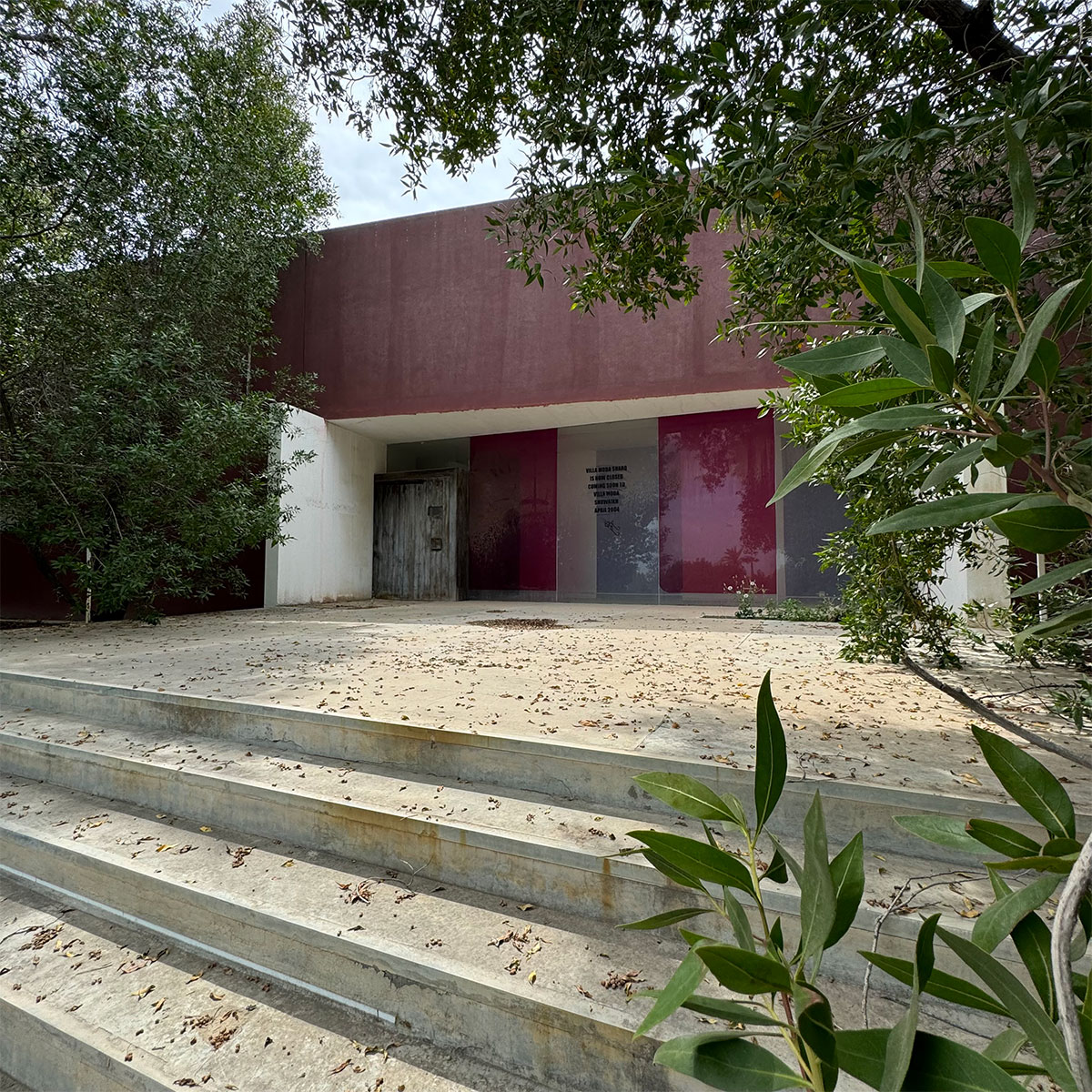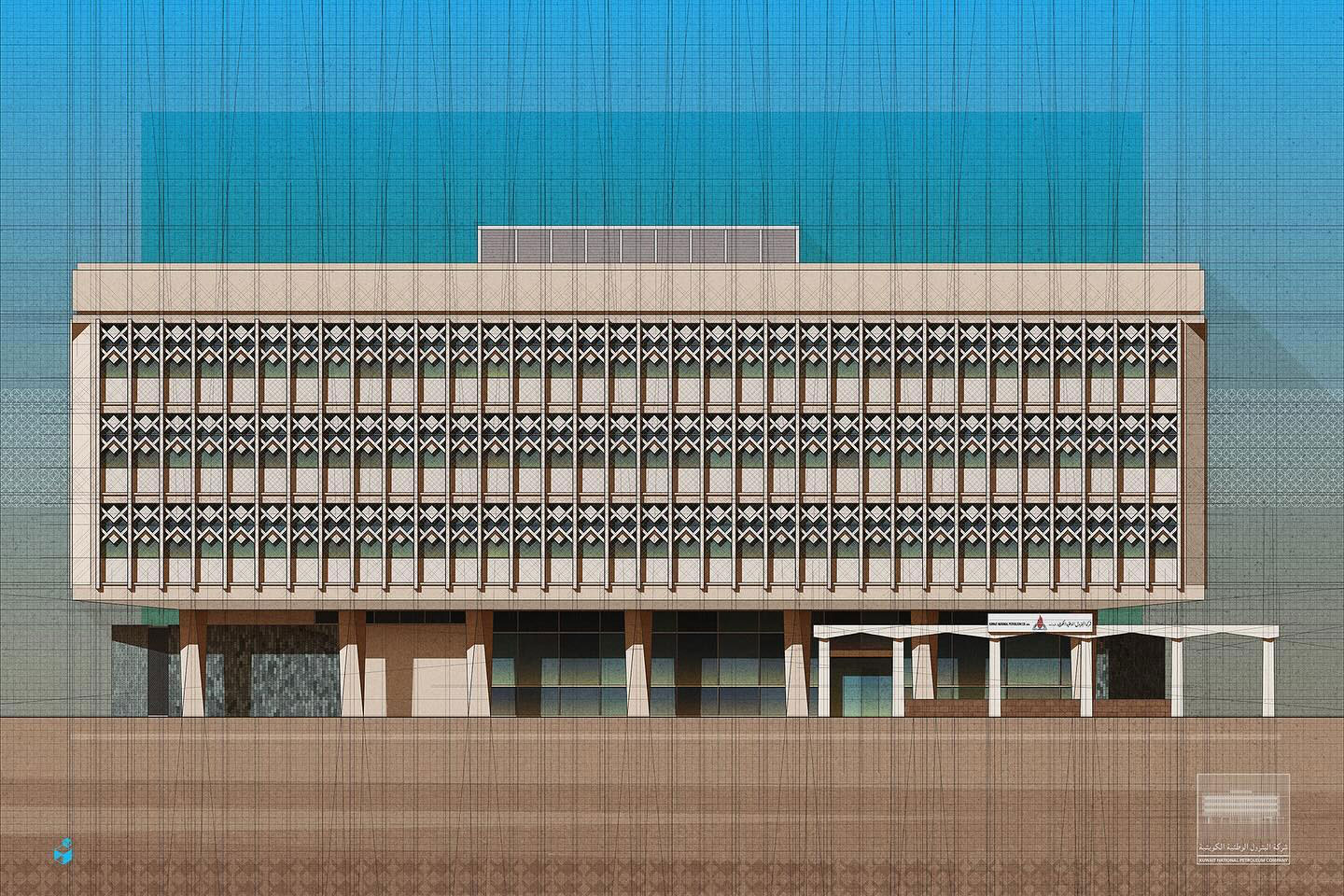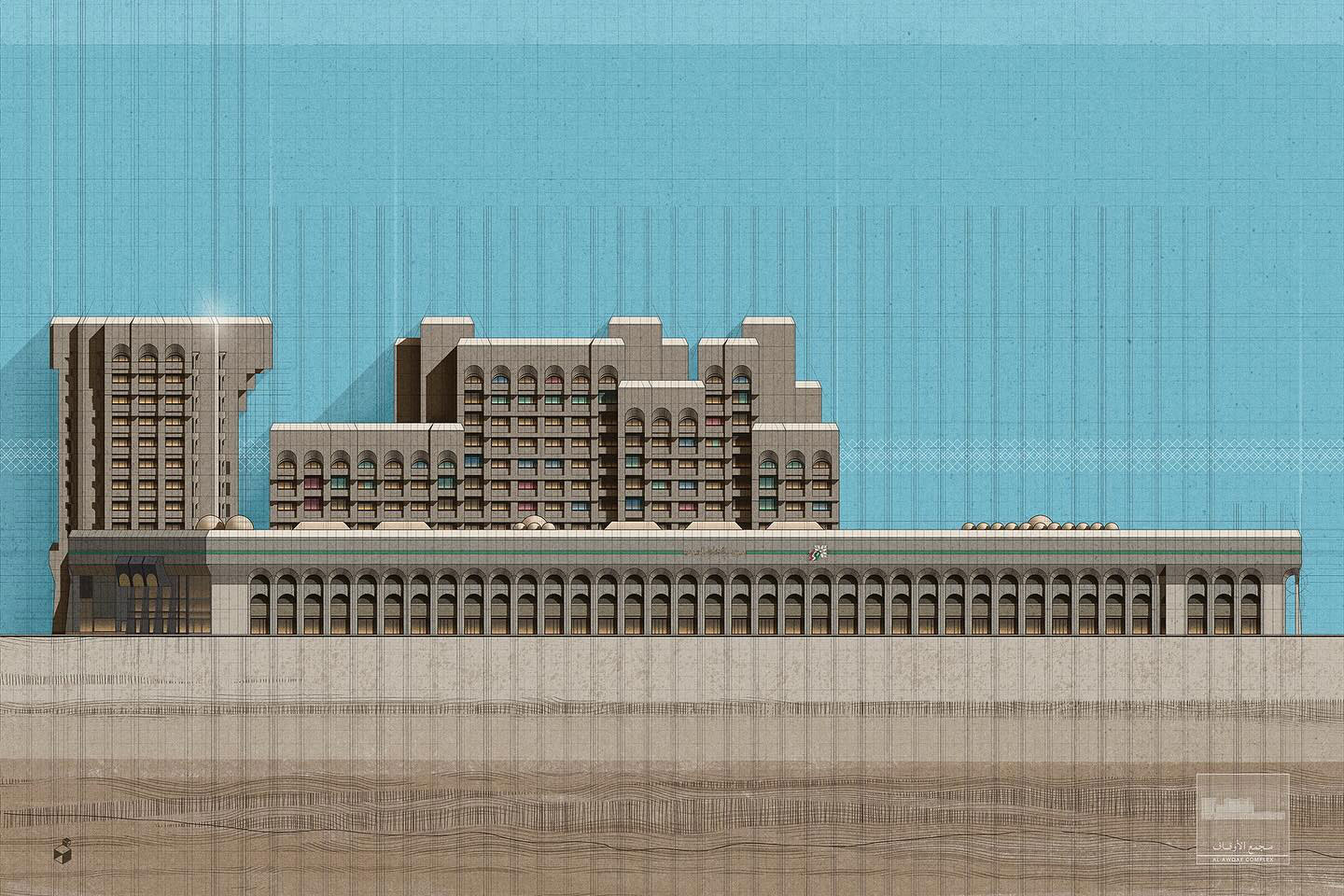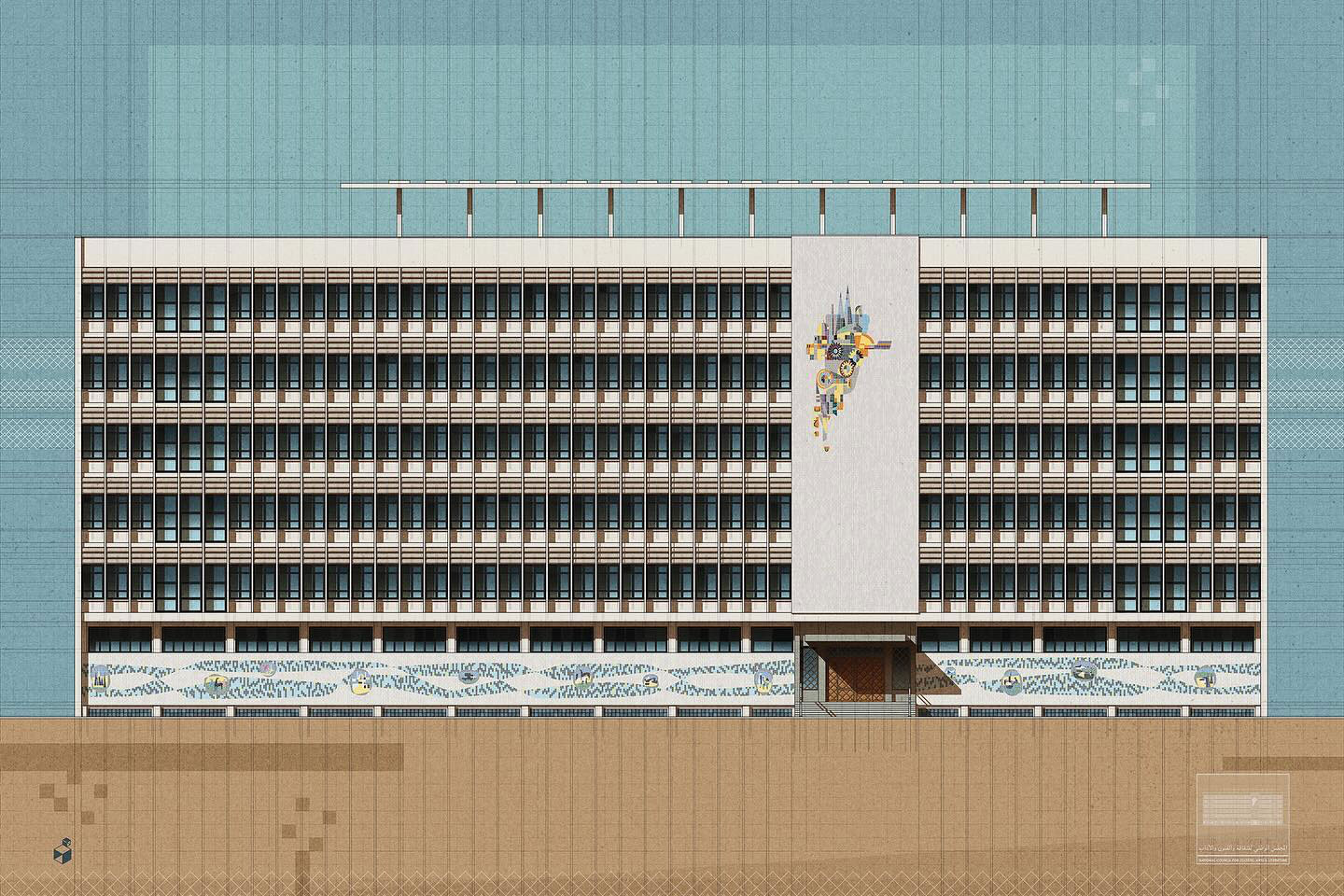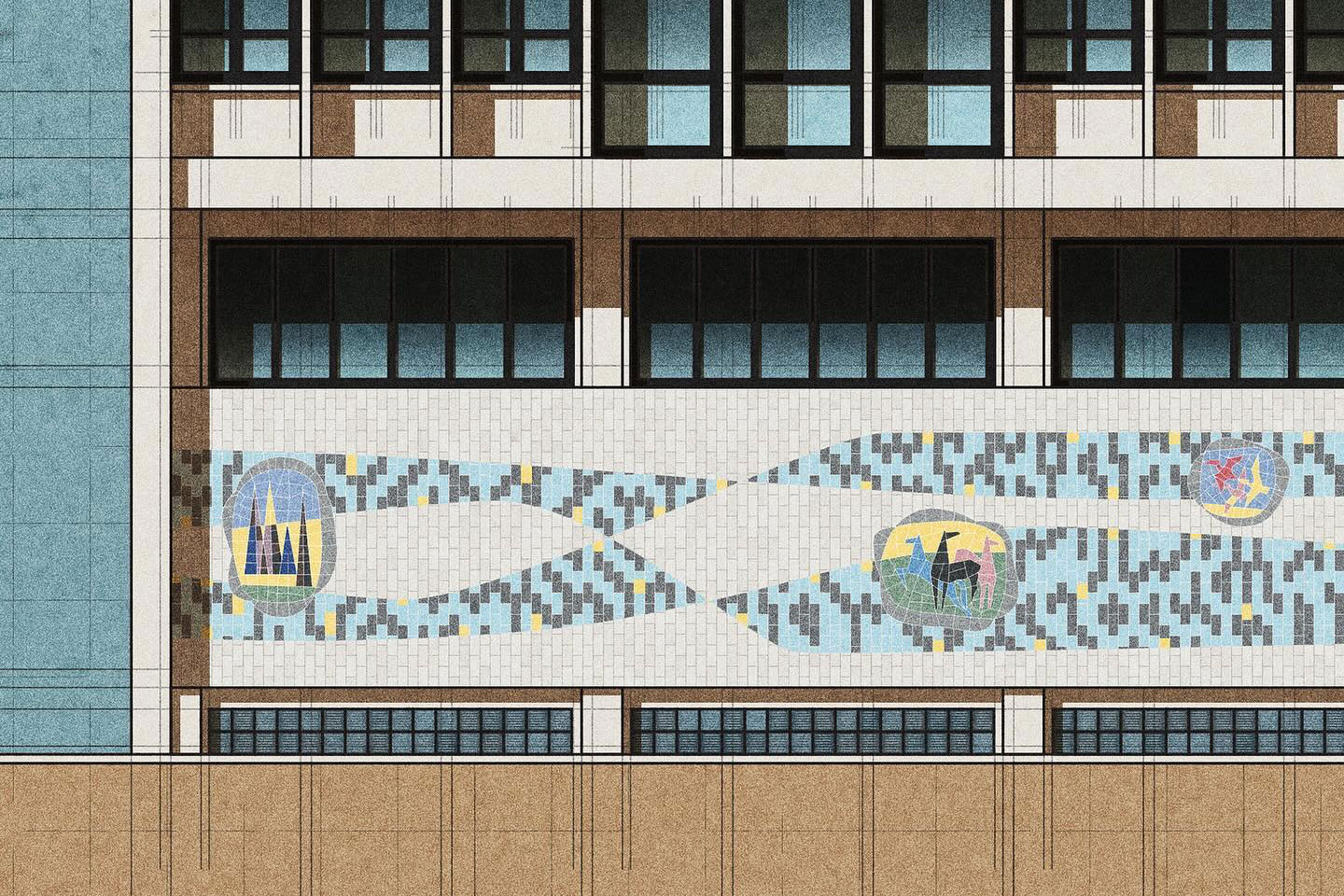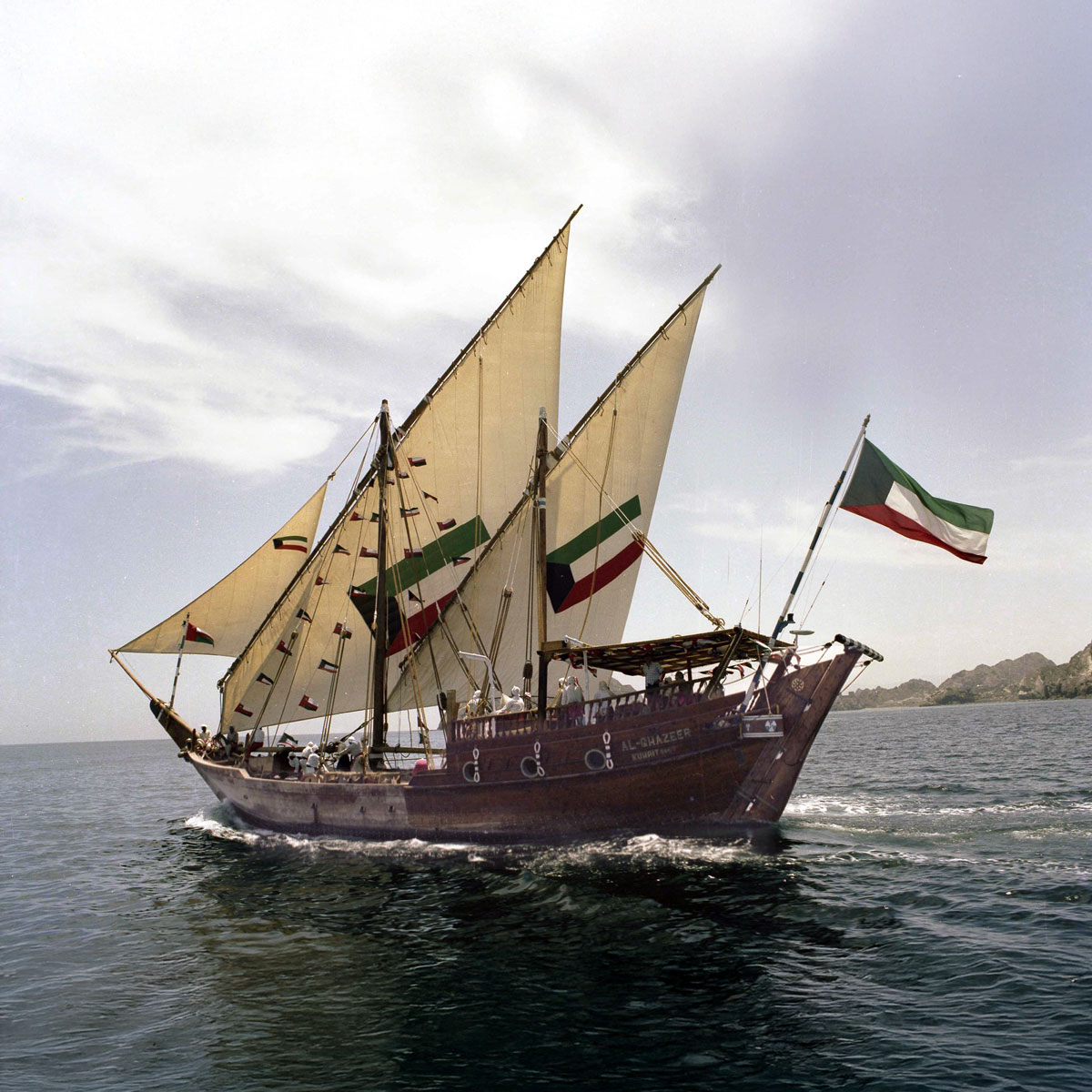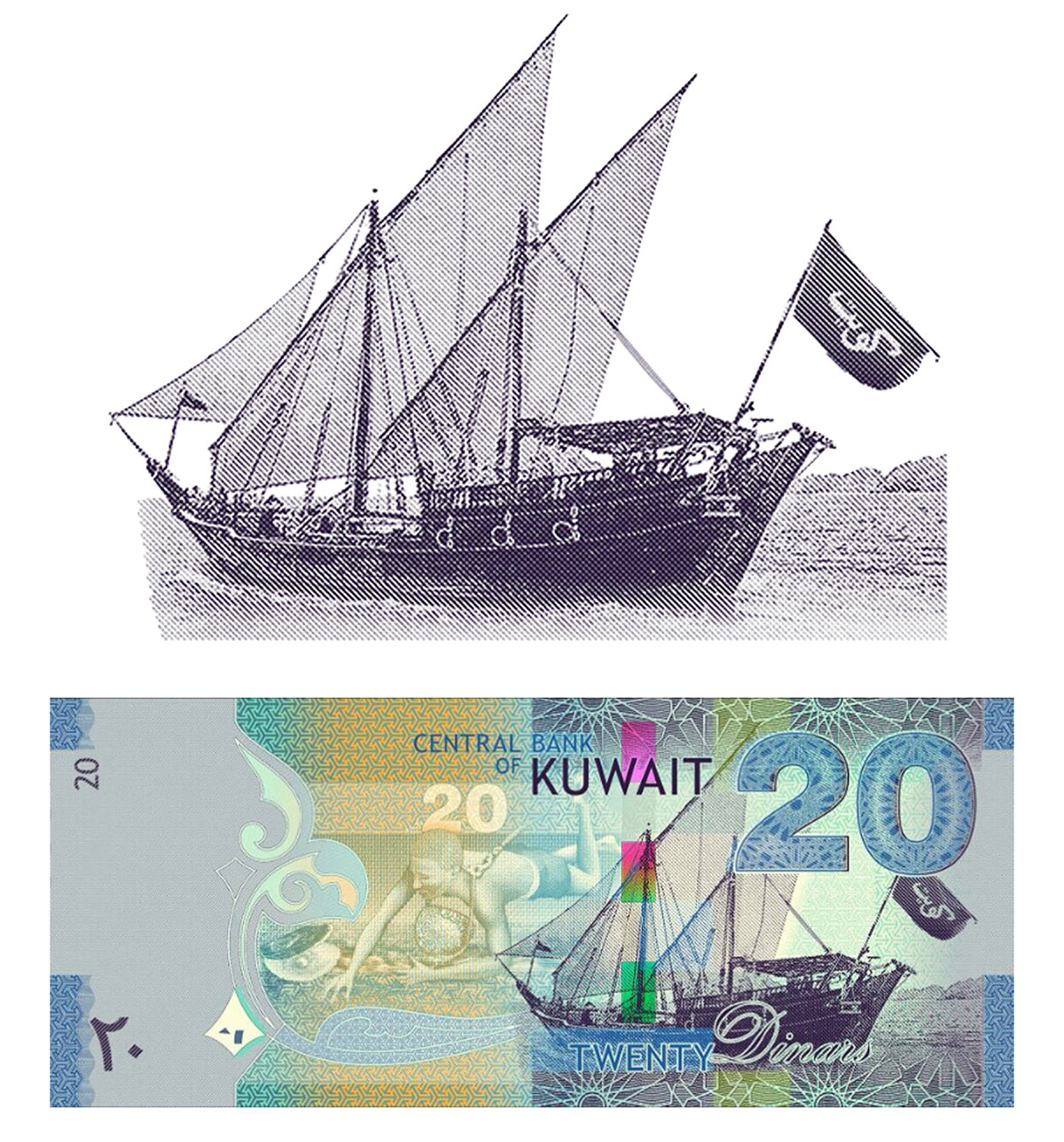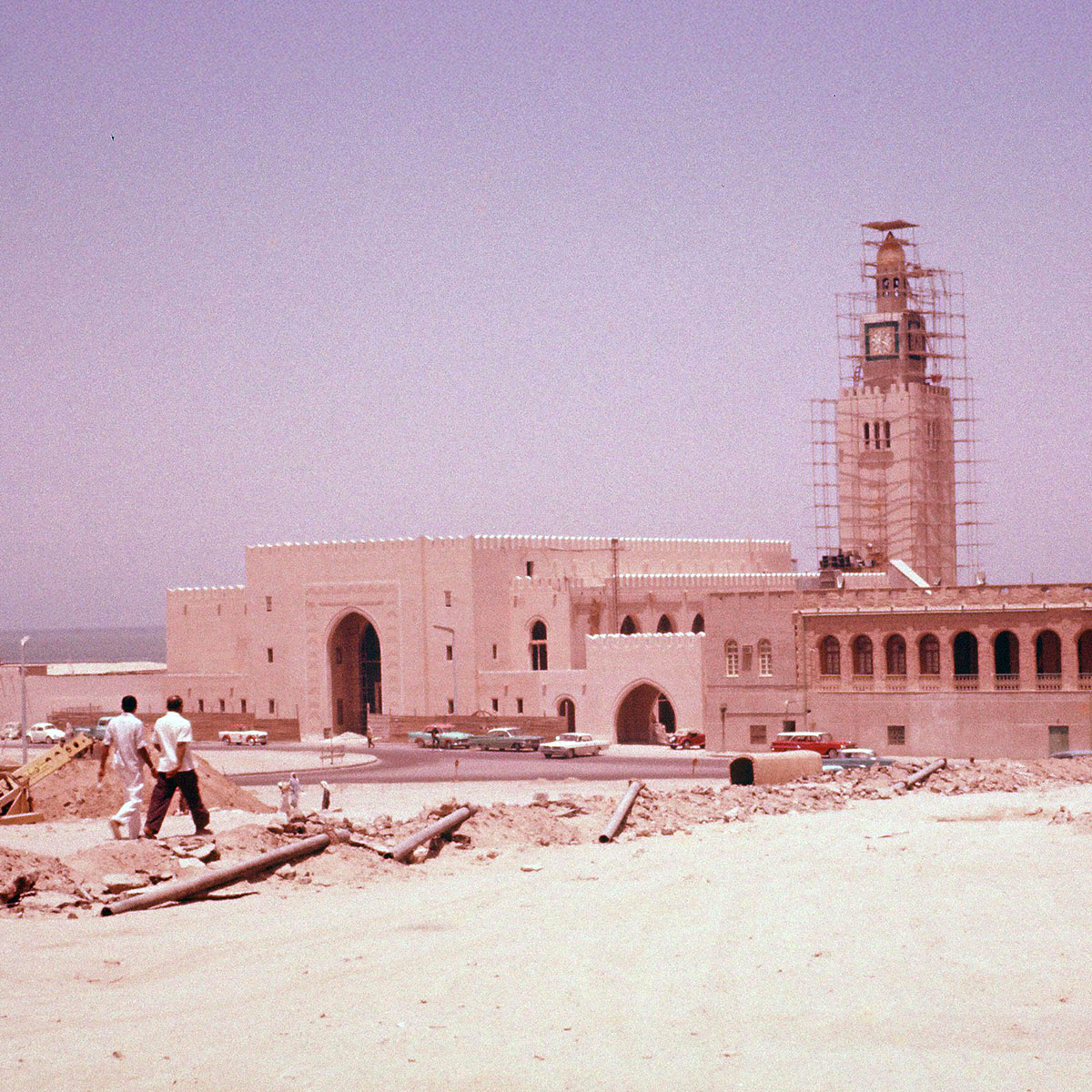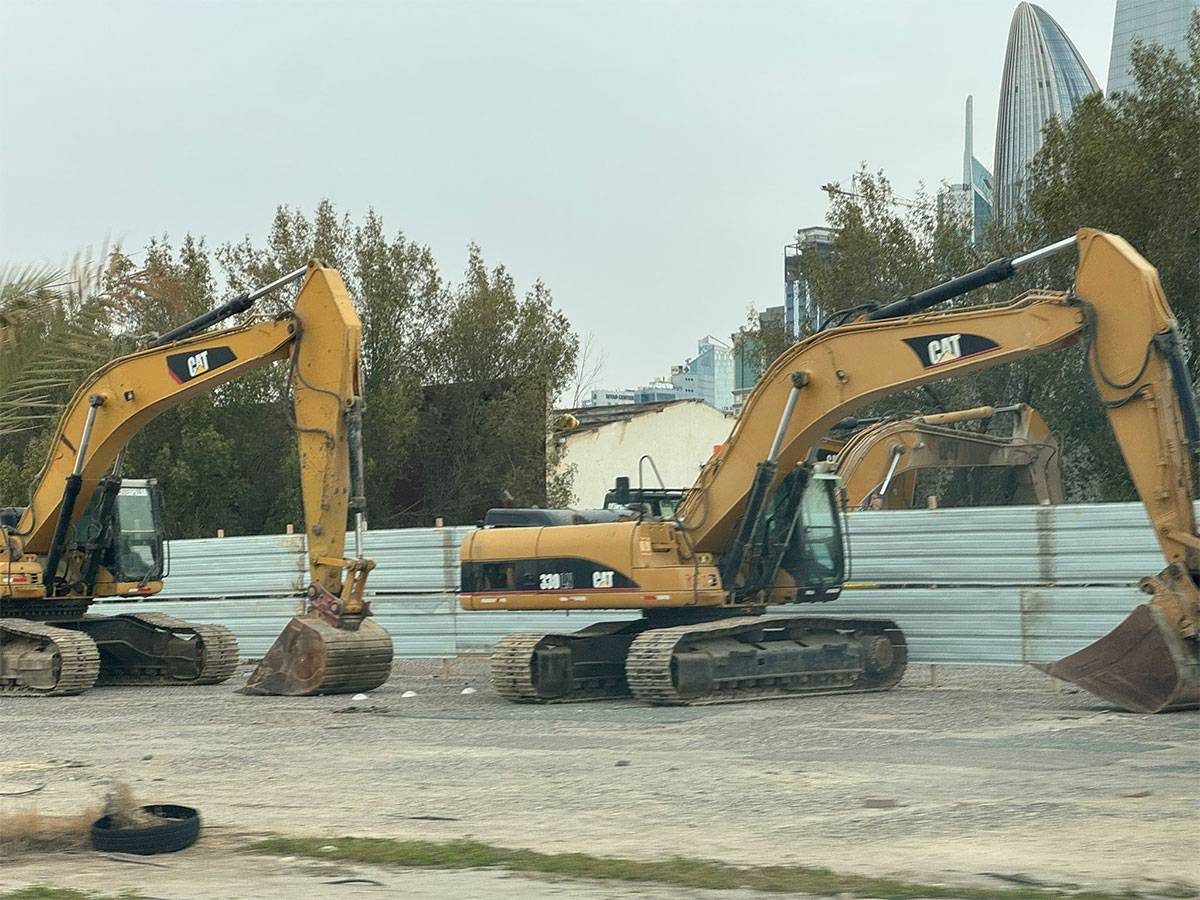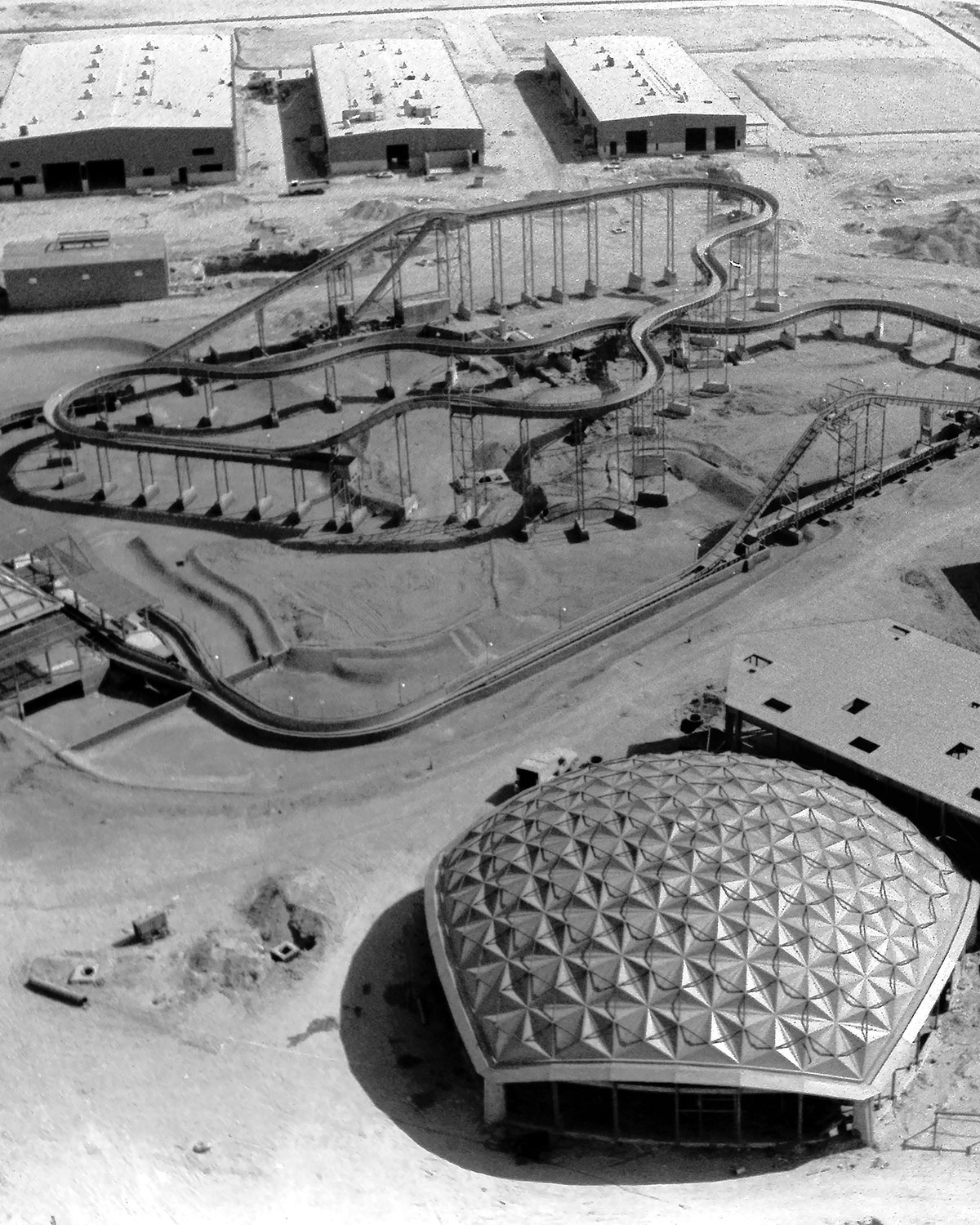
Originally from California, Claudia Farkas Al Rashoud has been working in Kuwait since 1979, when she became the first professional female photojournalist for the Arab Times newspaper. Claudia still has all the negatives and slides from the photos she took and has been incredibly kind in digging through her archives to find images I’ve requested. I sent her a fairly long list of the most random subjects I’m interested in, and so far she hasn’t blocked me, which is good news!
The first batch of photos I’ll be sharing from her archive are of Entertainment City during its construction.
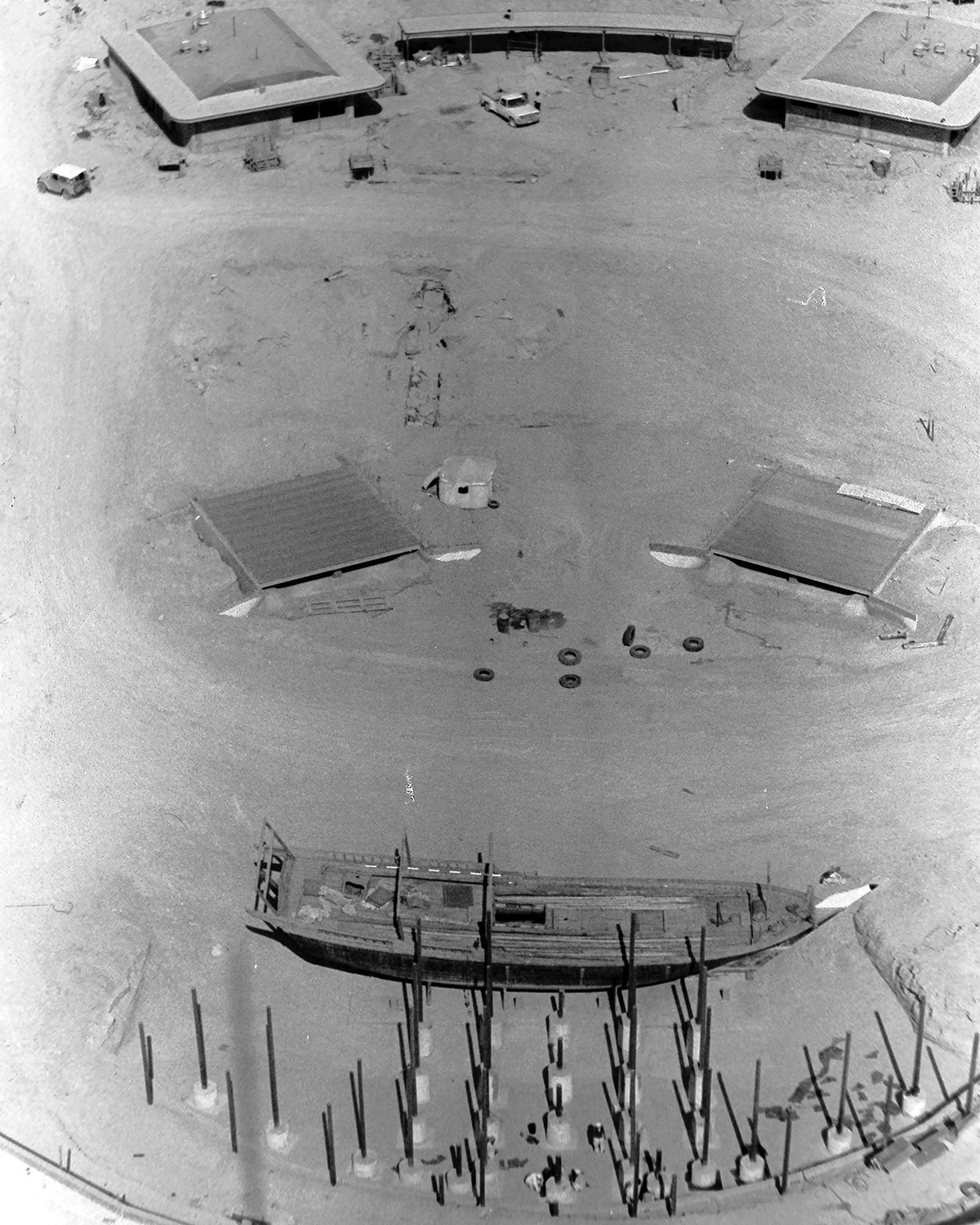
Claudia had taken photos and written a number of articles on Entertainment City for the Arab Times and other magazines. At the time, Entertainment City was the first theme park in the region and Kuwait’s most complex construction project, so it was big news. The design was handled by VTN, an American consulting firm, while construction was a joint venture between the Kuwaiti company International Contractors Group (ICG) and Castelli of Italy.
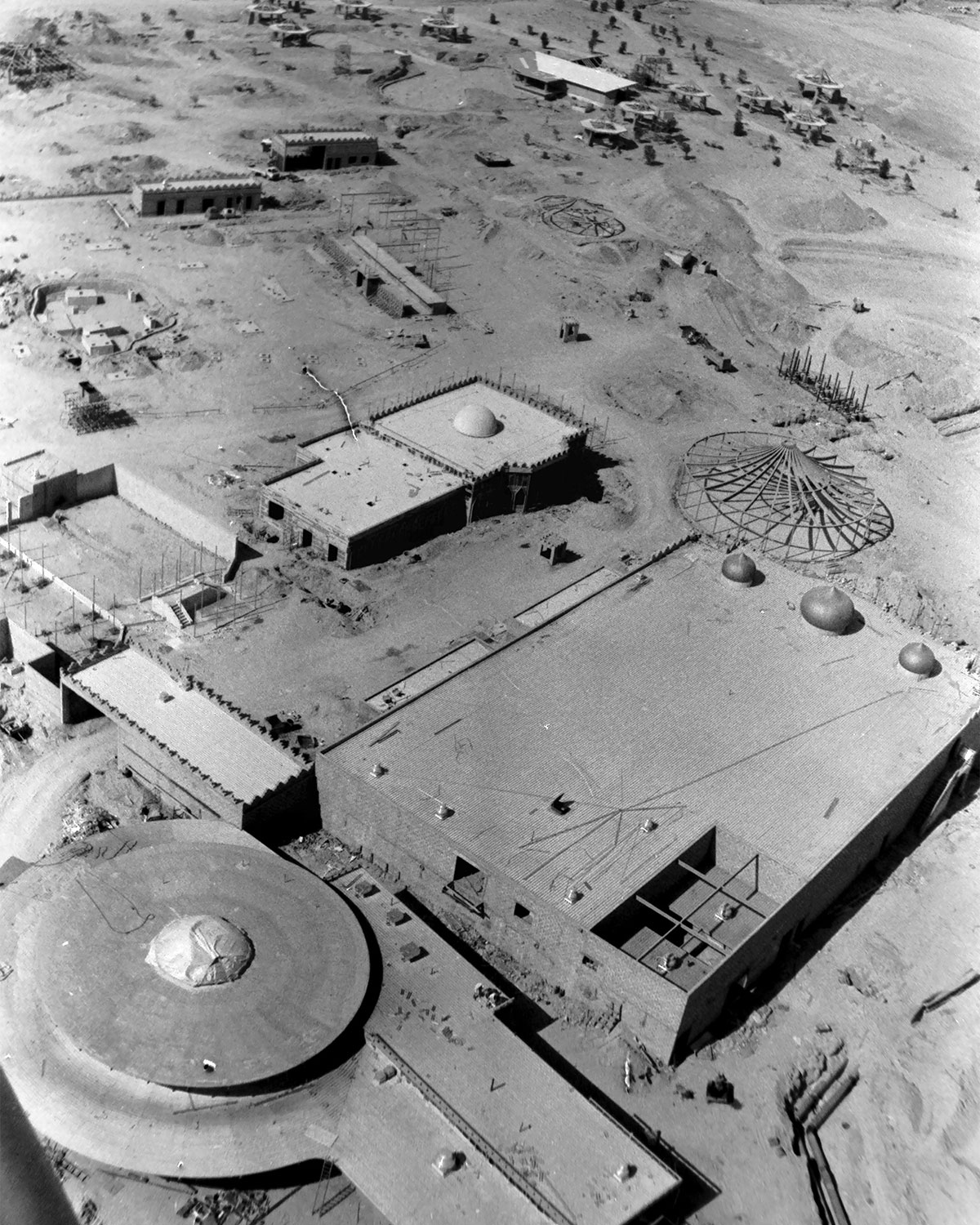
The park was divided into three main areas: Arab World, International World, and Future World. The contract was valued at KD 16,845,281, with around KD 1.8 million allocated to just two rides, Sinbad the Sailor and the African Boat Ride. Construction began in February 1979 and was commissioned by the Ministry of Public Works. At the time, it was one of the most ambitious and impressive projects ever undertaken in Kuwait. The park even featured Kuwait’s first railway line, which ran for two kilometers.
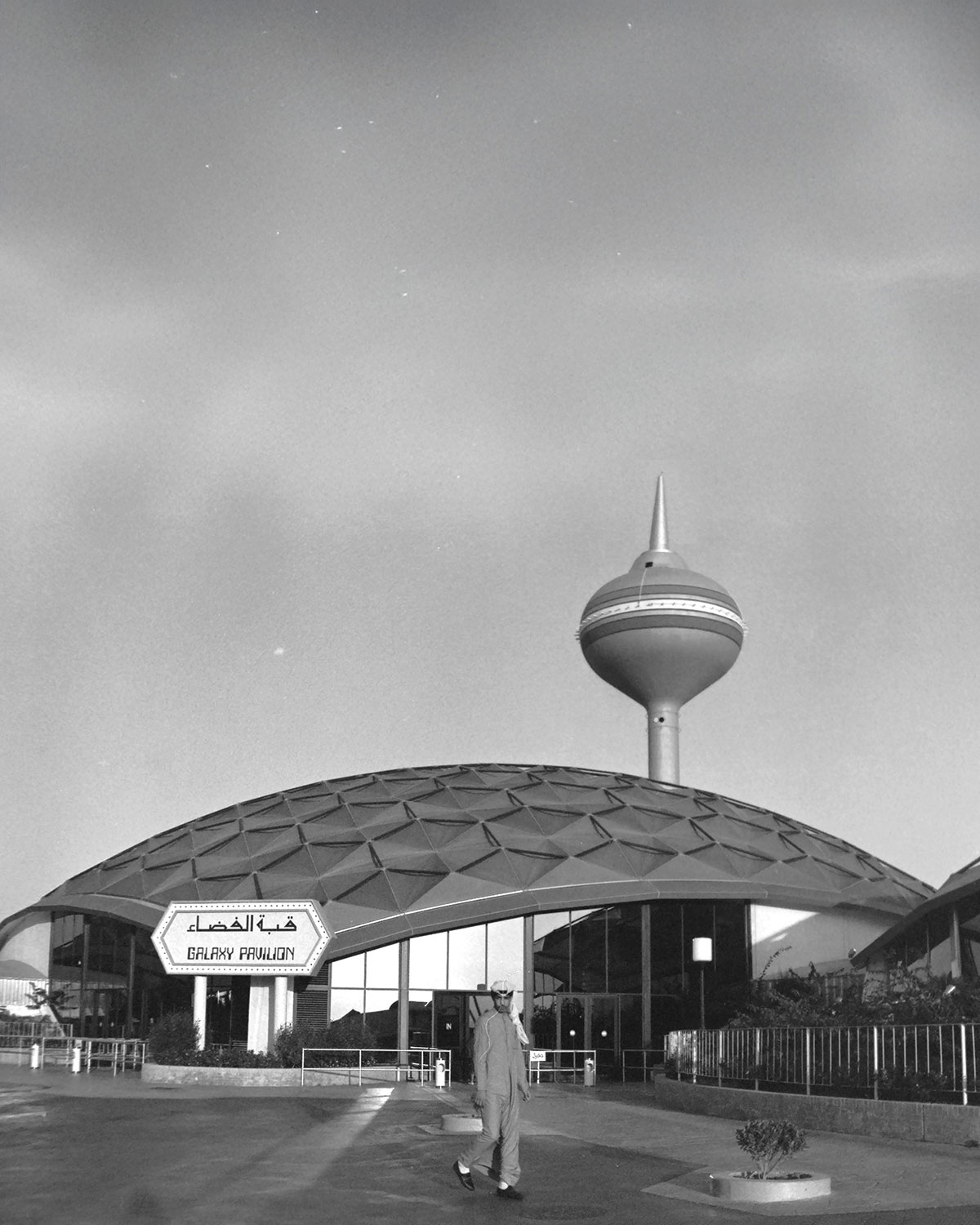
The photos she has are from different points in time, starting from the construction phase to after the park was completed. The aerial shots of the construction site were taken from the Space Needle in Future World. You can check out all the photos on my Instagram account.
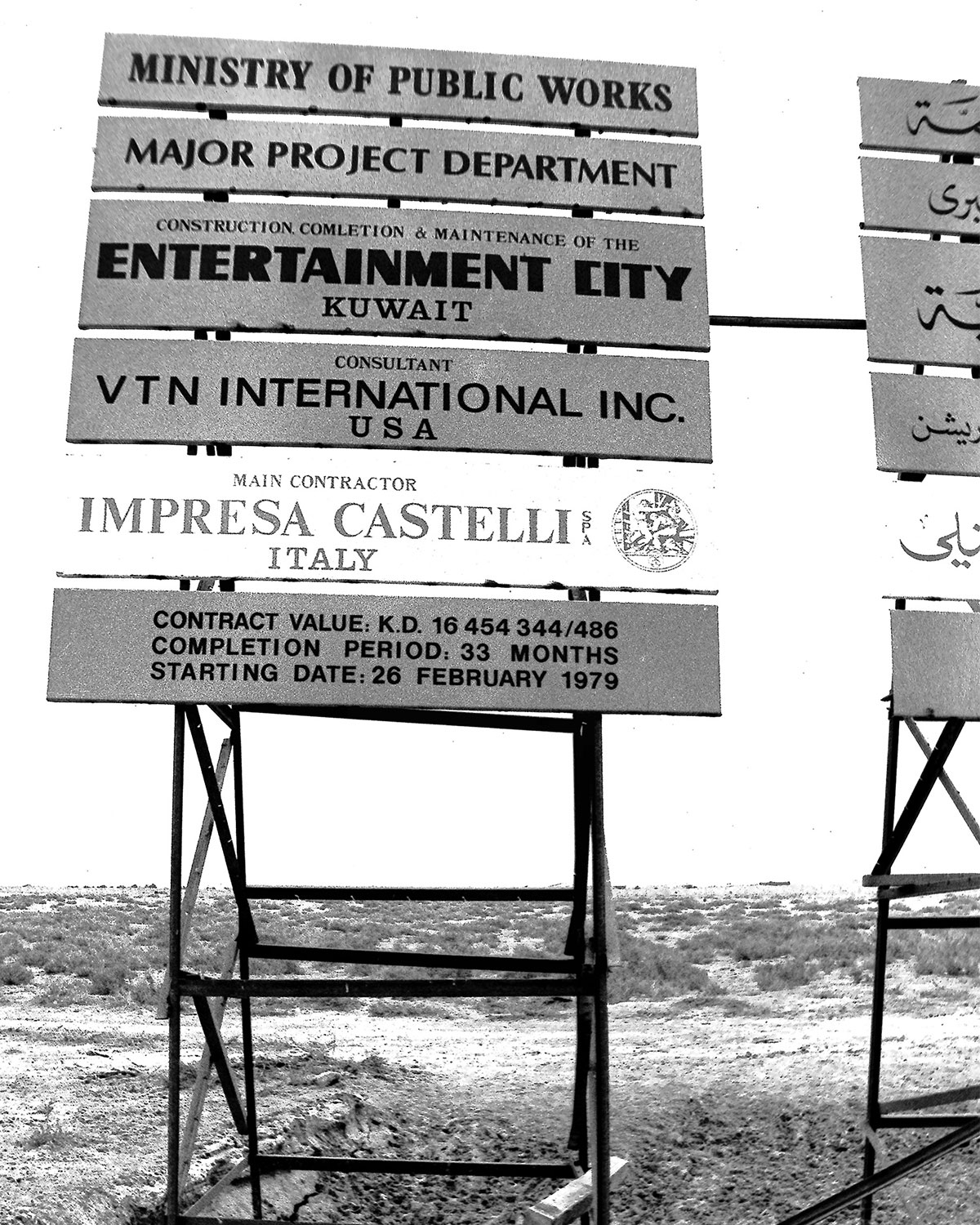
If you’re interested in more of Claudia’s photos, her books are available for sale at the CAP Bookshop in Shuwaikh. Claudia is also the co-founder of Touch of Hope, the Kuwait’s largest animal shelter. @claudia_alrashoud

